A little bit of history The pocket pen used to be a veritable institution, albeit a sexist one. The assumption was that a big ‘manly’ pen would not fit into the small, unaccommodating sort of pocket with which ladies’ attire was furnished, and so in the early twentieth century many a manufacturer competed to fulfil this niche demand, in a manner which was, infuriatingly, both aesthetically pleasing and massively patronising. Nowadays such nonsense no long prevails and a pocket pen is a handy thing for anyone who likes pens and has, err, pockets. But slung into the side pocket of a pair of jeans, for instance, it’s going to take some punishment – so Ian Schon, an enterprising Philadelphian, set out to engineer a durable solution.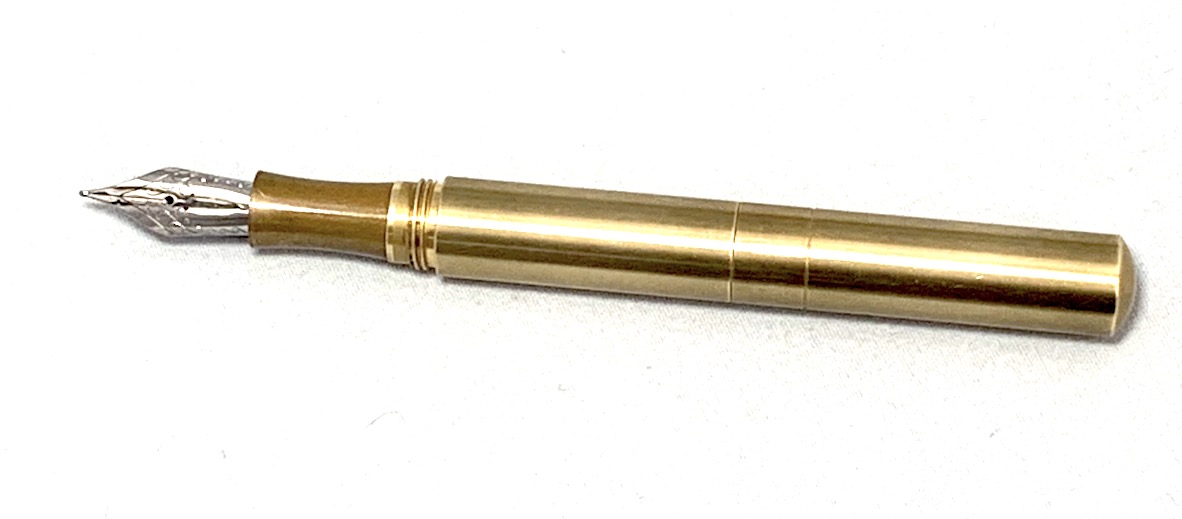 How it looks It’s a short featureless tube, basically. If you’re still stuck in gender discrimination mode, it could conceivably be mistaken for a portable mascara applicator, or an emergency Spitfire cockpit canopy removal tool. Obviously these are both foolish misperceptions, but such is the fate of the common-or-garden dinosaur. The rest of us can either polish the brass or let it elegantly corrode (‘patina’ is a lovely euphemism for brass rust, isn’t it?), while wondering what lurks within.
How it looks It’s a short featureless tube, basically. If you’re still stuck in gender discrimination mode, it could conceivably be mistaken for a portable mascara applicator, or an emergency Spitfire cockpit canopy removal tool. Obviously these are both foolish misperceptions, but such is the fate of the common-or-garden dinosaur. The rest of us can either polish the brass or let it elegantly corrode (‘patina’ is a lovely euphemism for brass rust, isn’t it?), while wondering what lurks within.
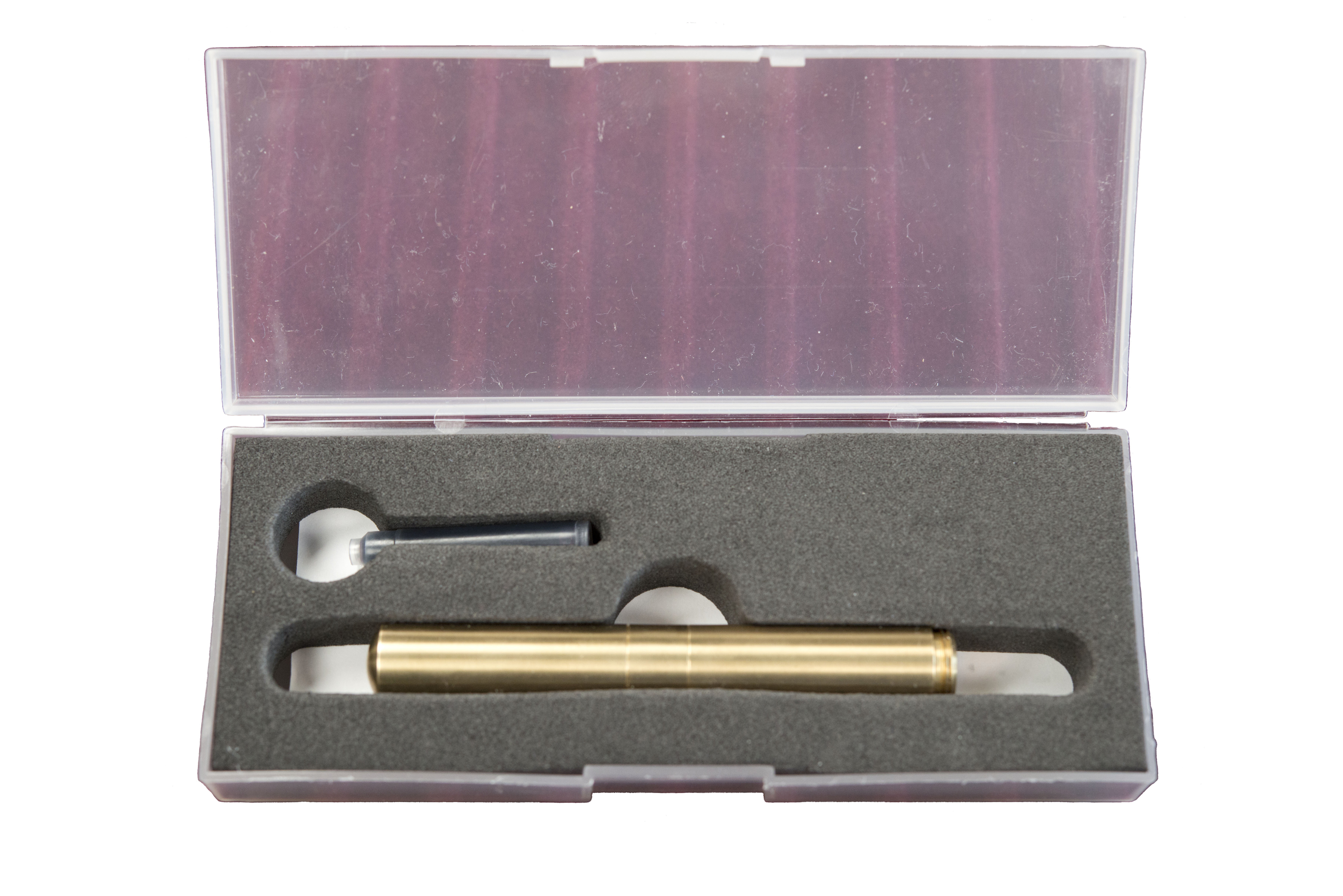 How it feels Heavy, obviously – it’s made of brass. No messing (k-bmm, tssk!). But when the Pocket 6 is fully assembled, which is easy enough with the screw-in cap posting arrangement, it both looks and feels like a fairly full-sized pen. If the weight is a bother, which it seemed to be for some of our reviewers, then lighter aluminium versions are also available – with some eye-popping paint jobs.
How it feels Heavy, obviously – it’s made of brass. No messing (k-bmm, tssk!). But when the Pocket 6 is fully assembled, which is easy enough with the screw-in cap posting arrangement, it both looks and feels like a fairly full-sized pen. If the weight is a bother, which it seemed to be for some of our reviewers, then lighter aluminium versions are also available – with some eye-popping paint jobs.

How it fills This is a straightforward ‘short international cartridge’ affair – although there is always the trusty syringe for added variety.
Crucially, how it writes… Pretty well, for this has a nice big #6 steel JoWo nib. Very few pocket pens house a full #6, and indeed only the Kaweco Supra comes close, so this is the essential MacGuffin which makes the Pocket 6 so unusual – and, obviously, which provides its name. Pen! What is it good for? Errm, putting in your pocket, maybe? It will take some bashing-about and still write well when you need it to – although the time involved in reassembling the pen before writing might not make this the ideal jotter for very quick notes.
Pen! What is it good for? Errm, putting in your pocket, maybe? It will take some bashing-about and still write well when you need it to – although the time involved in reassembling the pen before writing might not make this the ideal jotter for very quick notes.
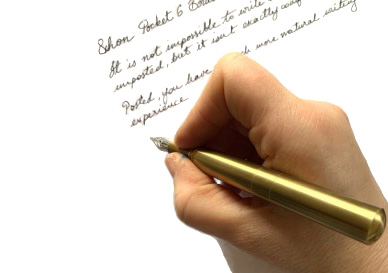
VFM Reasonably competitive. in our view. With price tags usually well into triple figures this is certainly not cheap, but for a well-engineered and meticulously produced pen which is likely to outlast most purchasers, it’s certainly no rip-off either.
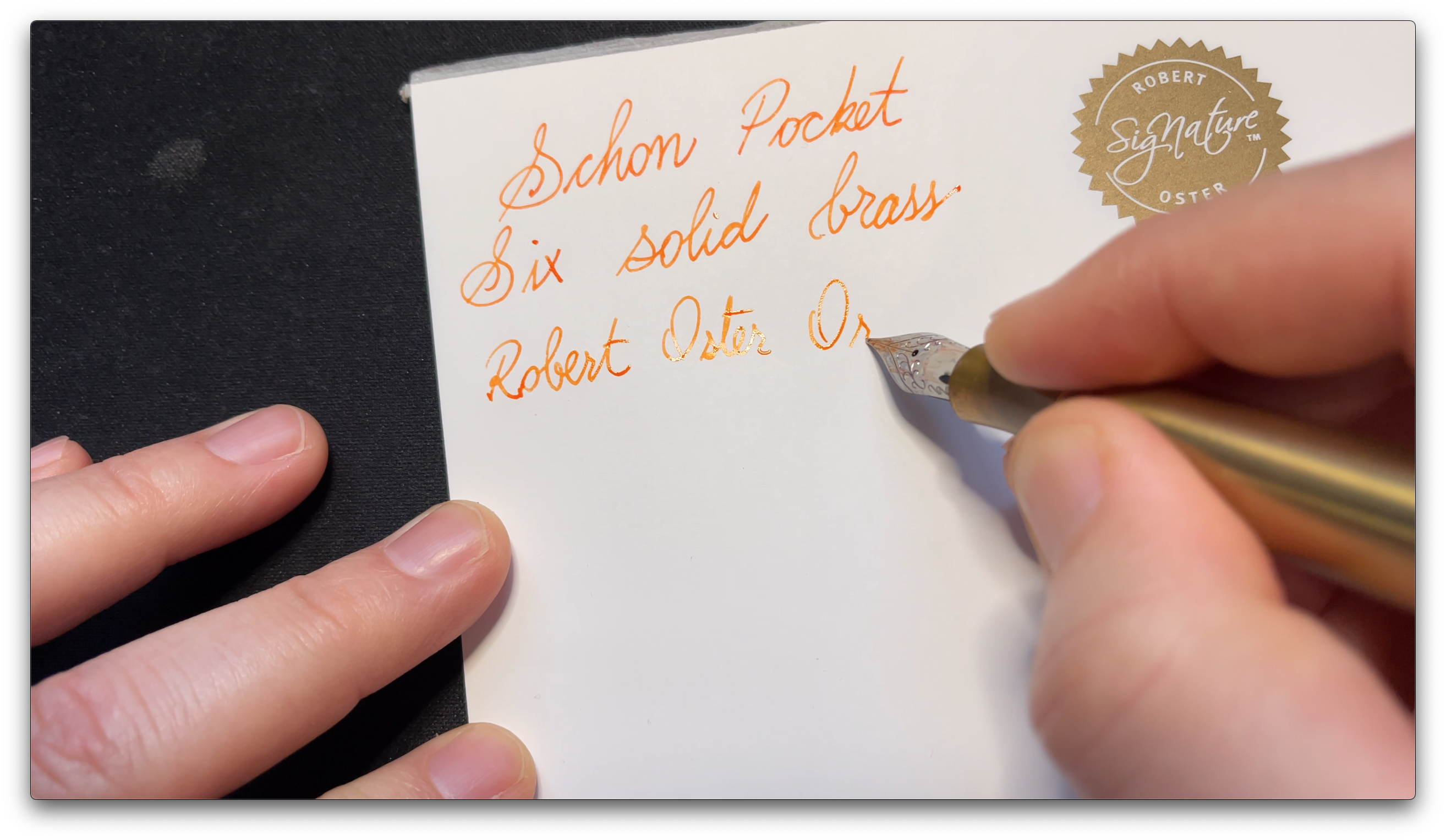
The only way is ethics These are made by Ian Schon himself, without masses of added packaging and with no obvious risk of poor labour conditions.
If this isn’t quite your cup of tea, but almost… The Kaweco Supra, without the extension tube, does a similar job – albeit with a Bock nib instead.
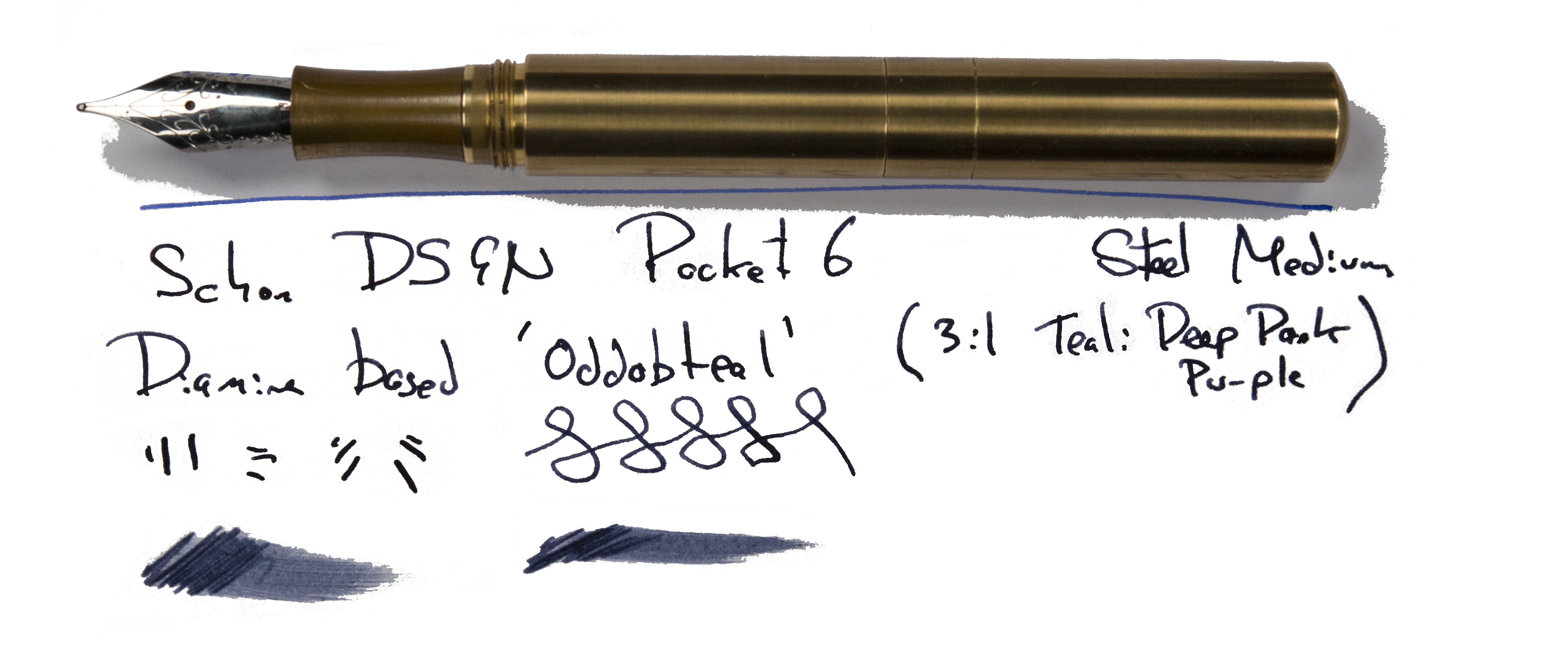 Our overall recommendation If you want a pocket pen which last for a century and has a ‘proper’ nib on the front, this does the job in style. Just beware that the brass version is hefty, and the aluminium version seems to be very popular too, quite possibly for that reason.
Our overall recommendation If you want a pocket pen which last for a century and has a ‘proper’ nib on the front, this does the job in style. Just beware that the brass version is hefty, and the aluminium version seems to be very popular too, quite possibly for that reason.
Where to get hold of one Ours came from Nero’s Notes, but in the UK Izods also stocks them. Alternatively, you could go straight to the source.
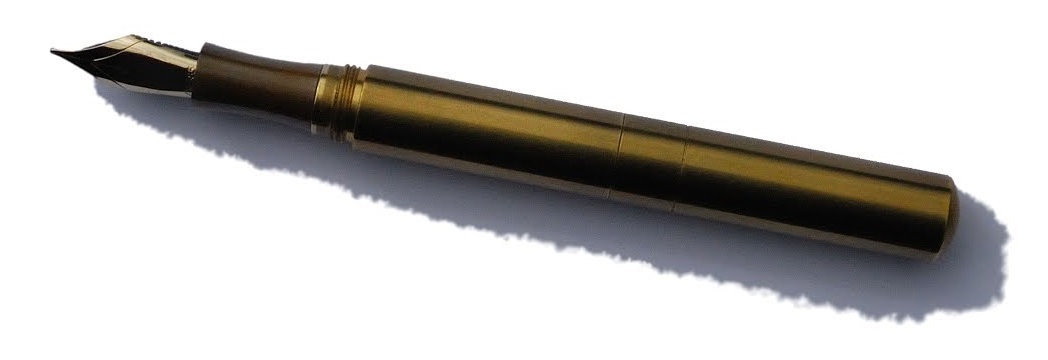
This meta-review references:
- Scribble Monboddo’s hand-written review
- Mr.Teal’s video review
- Alison’s review
- Ania’s review
- Joe’s review
- Dapprman’s review
- Scribble’s shiny upgrade
Thanks to Nero’s Notes for furnishing us with this remarkable pocket pen.
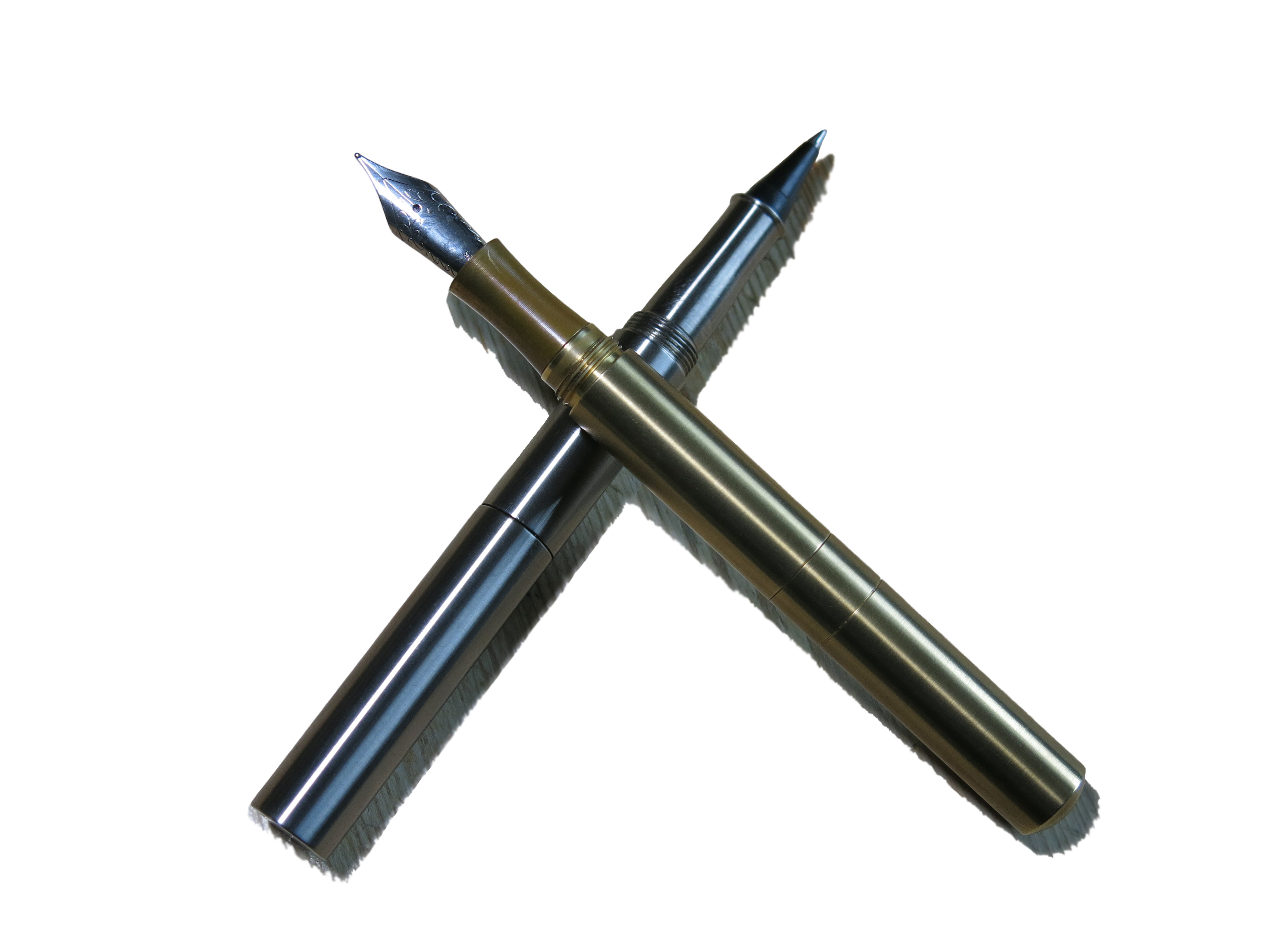
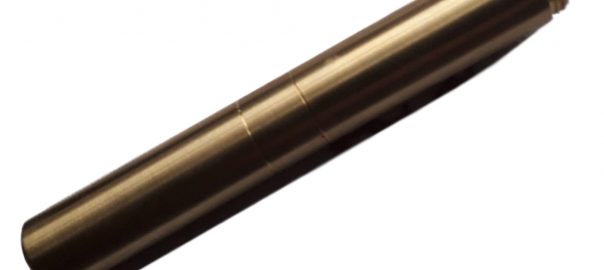
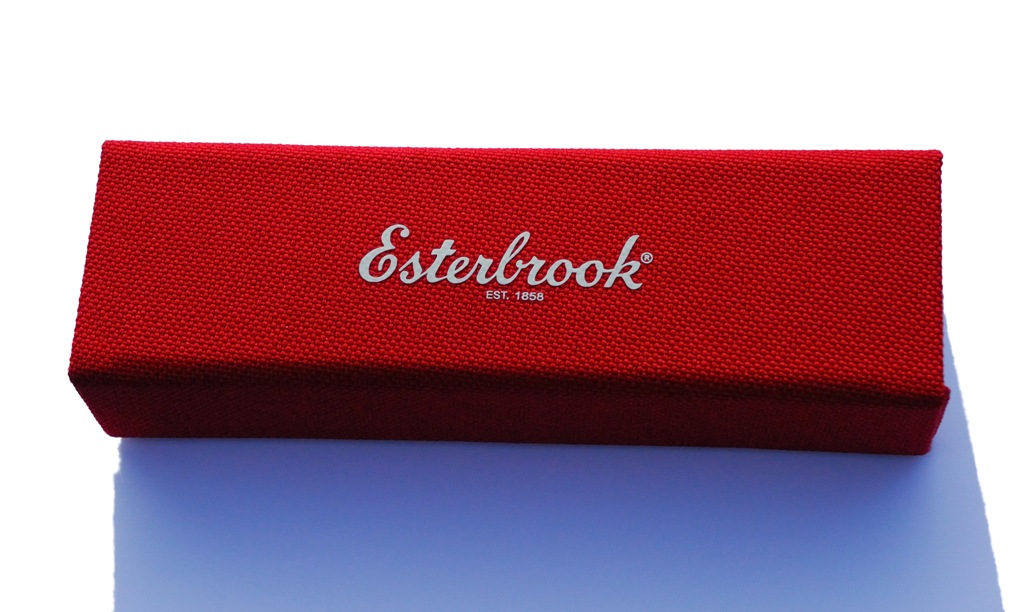
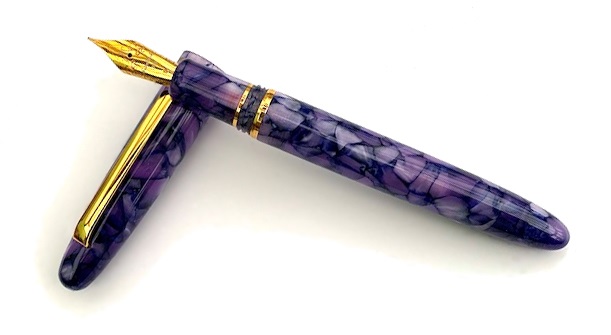
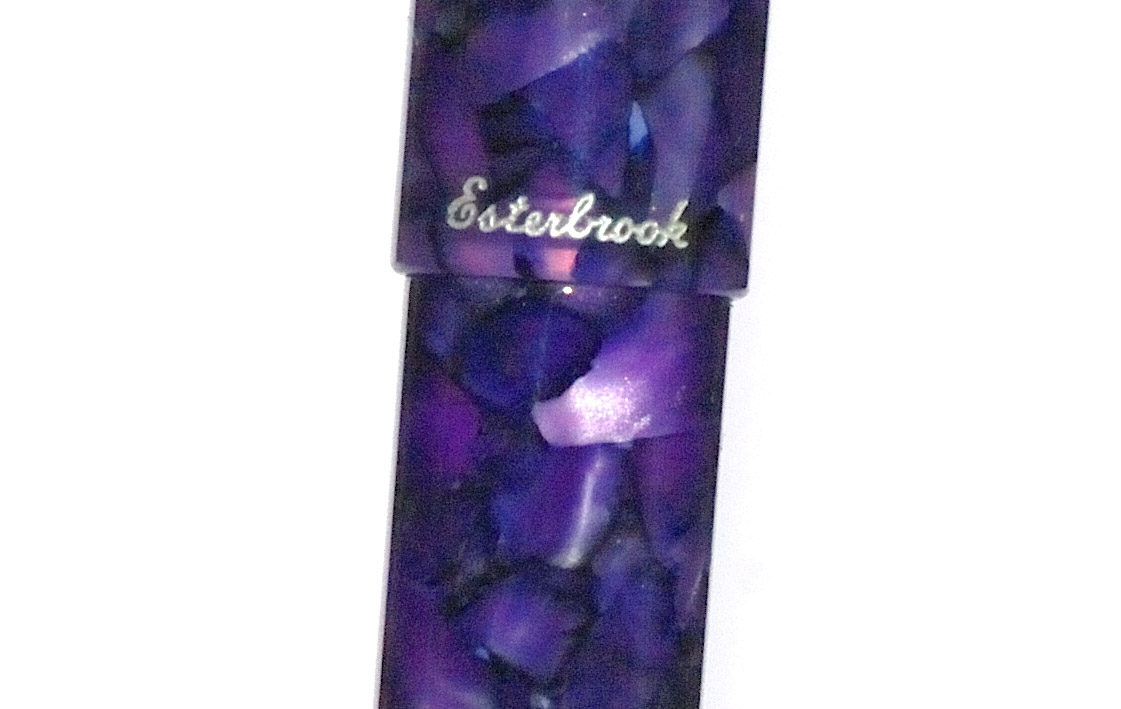
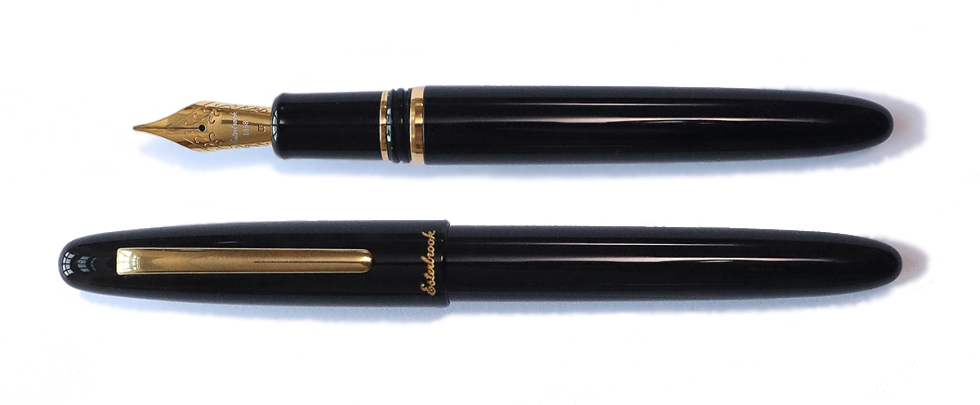

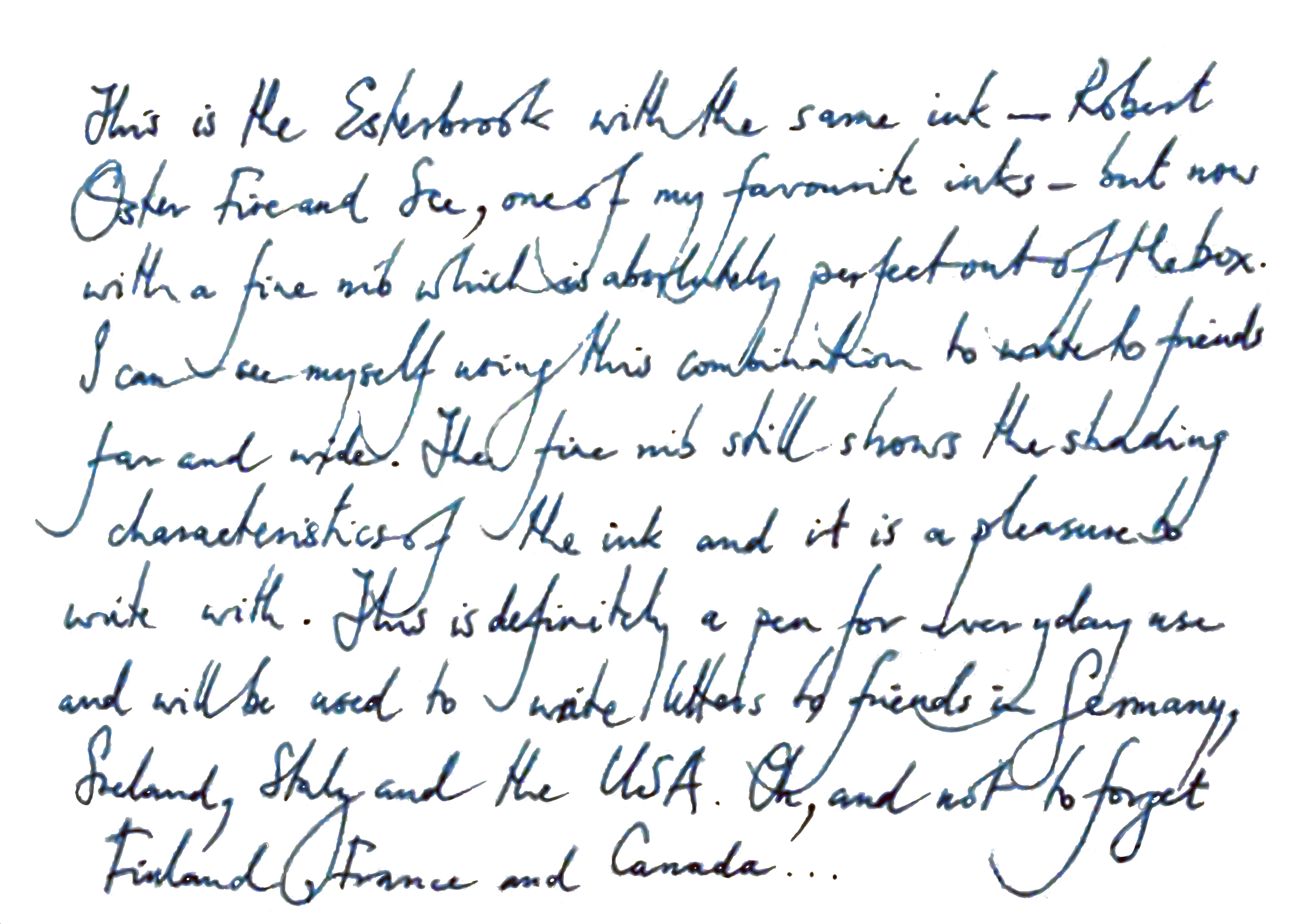
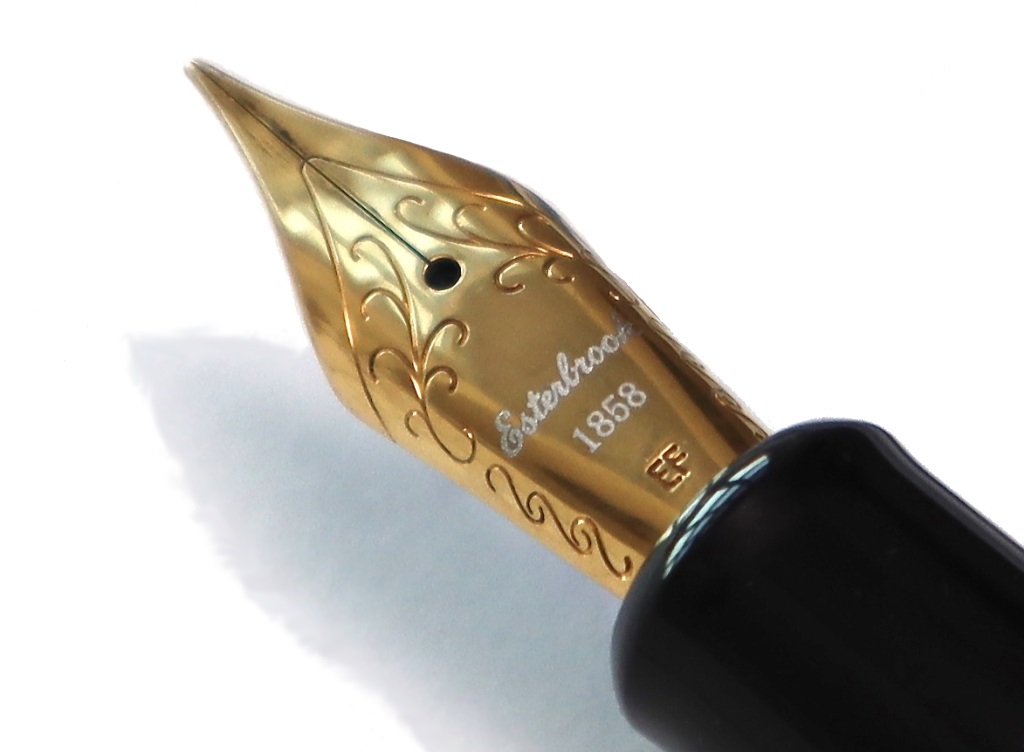
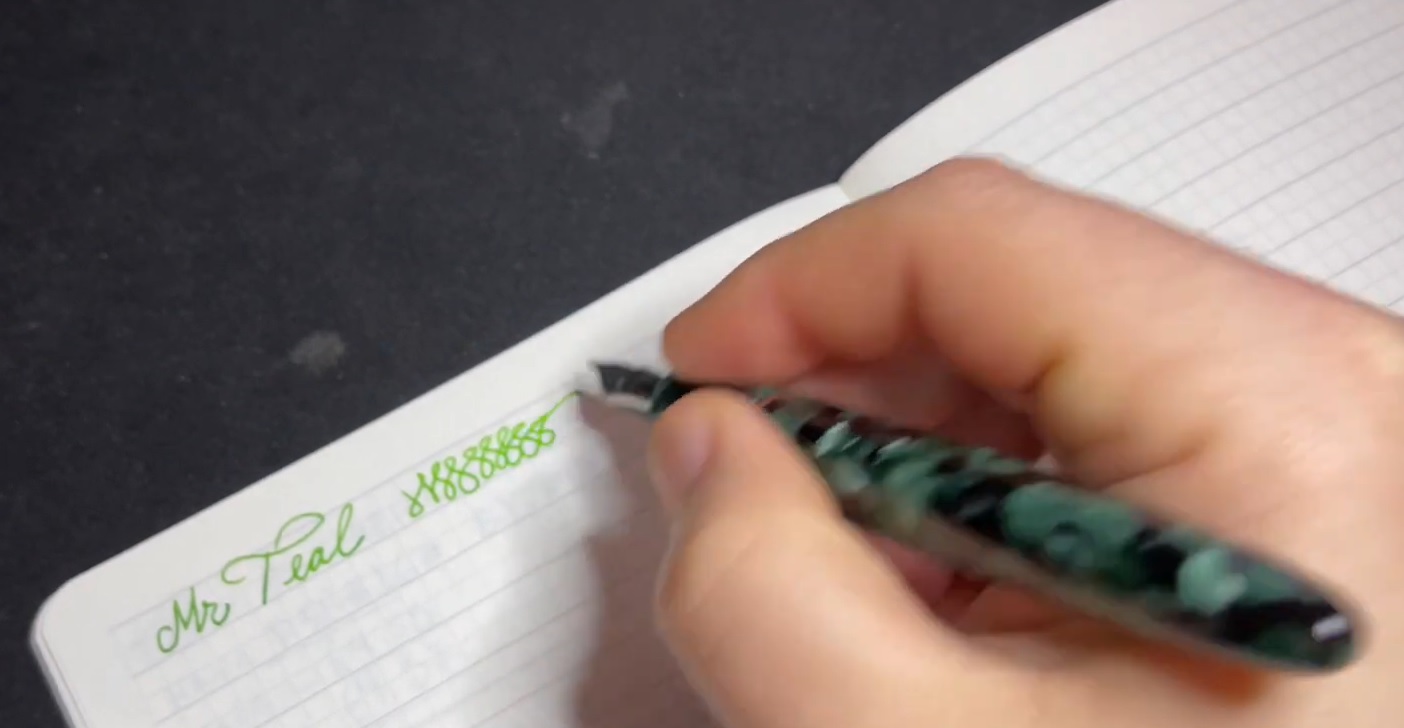
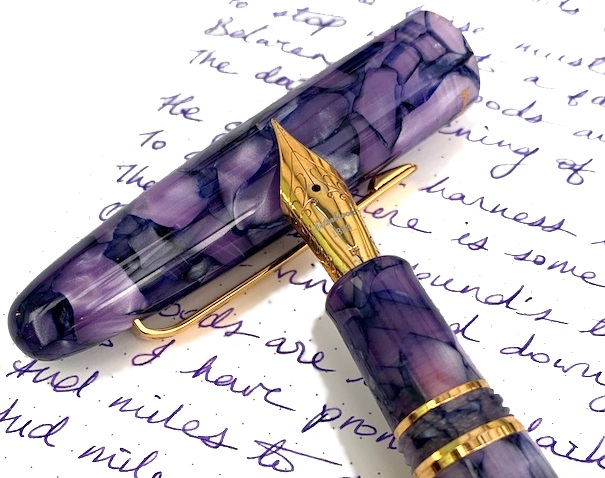
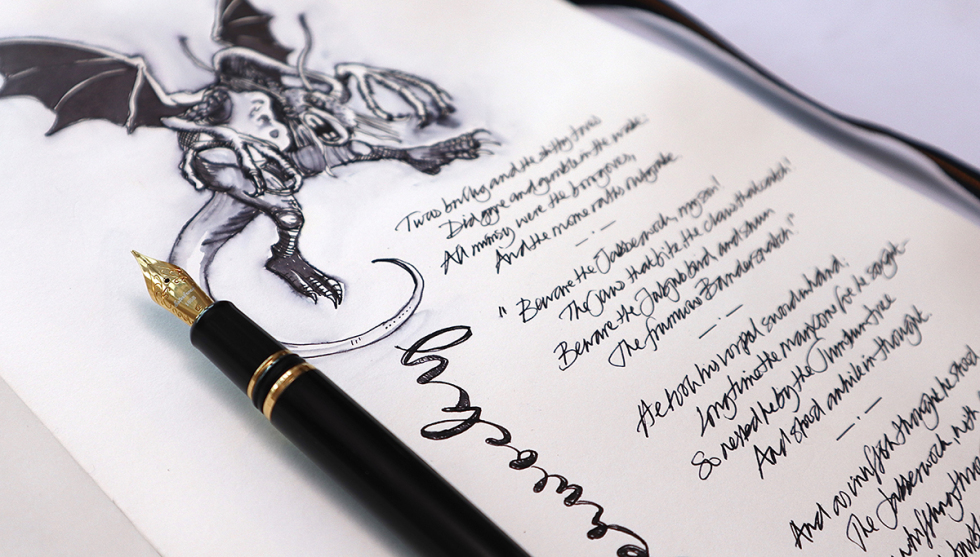
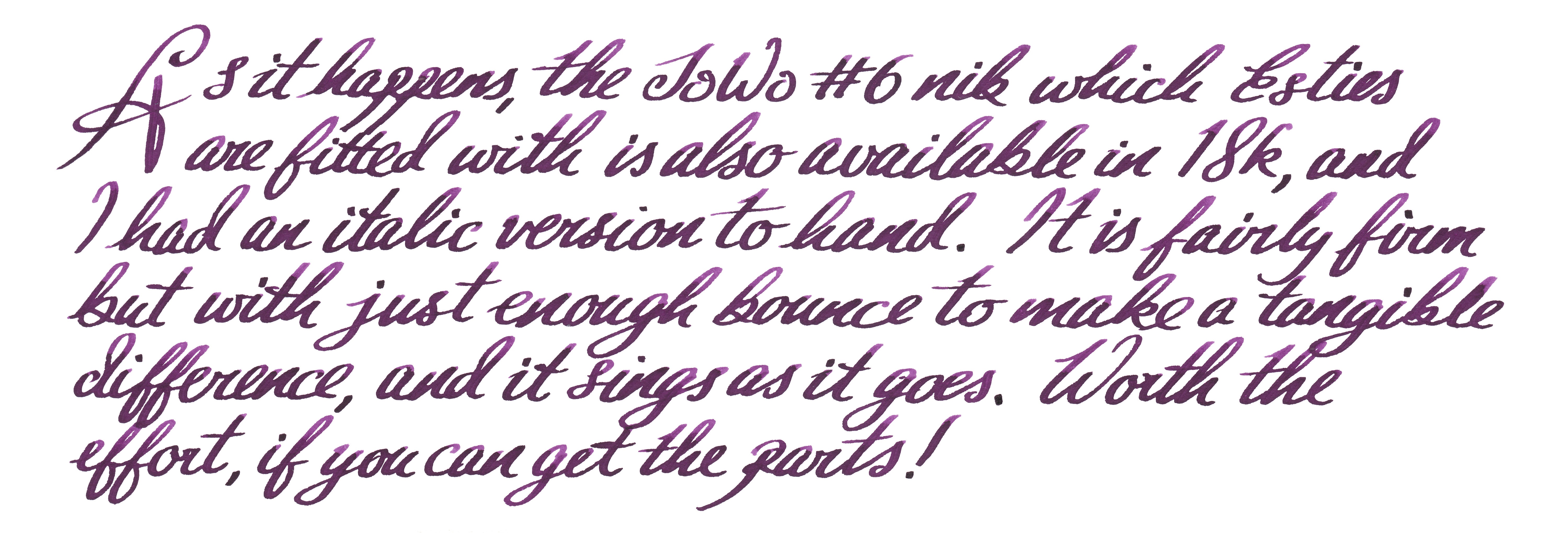
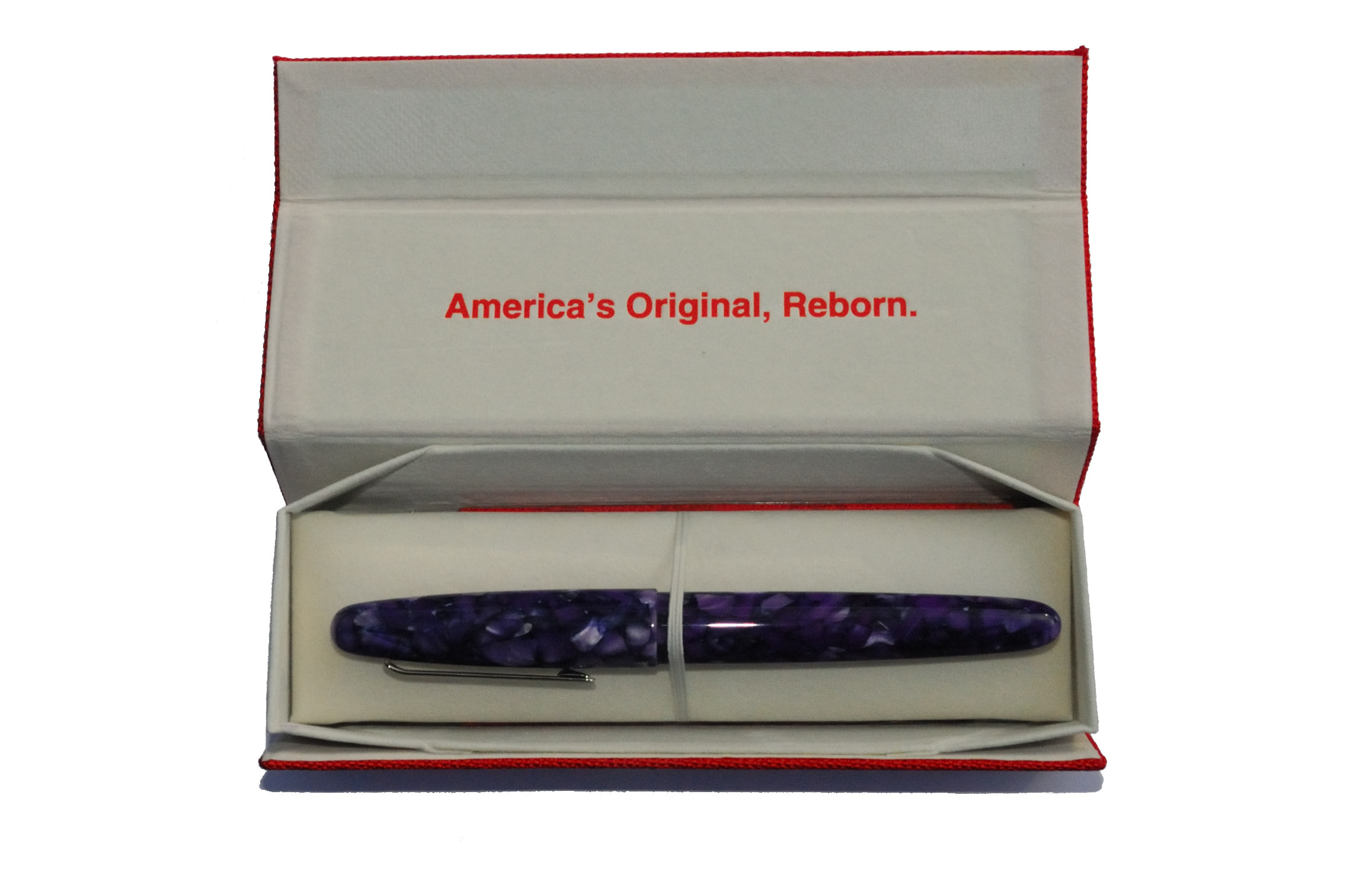

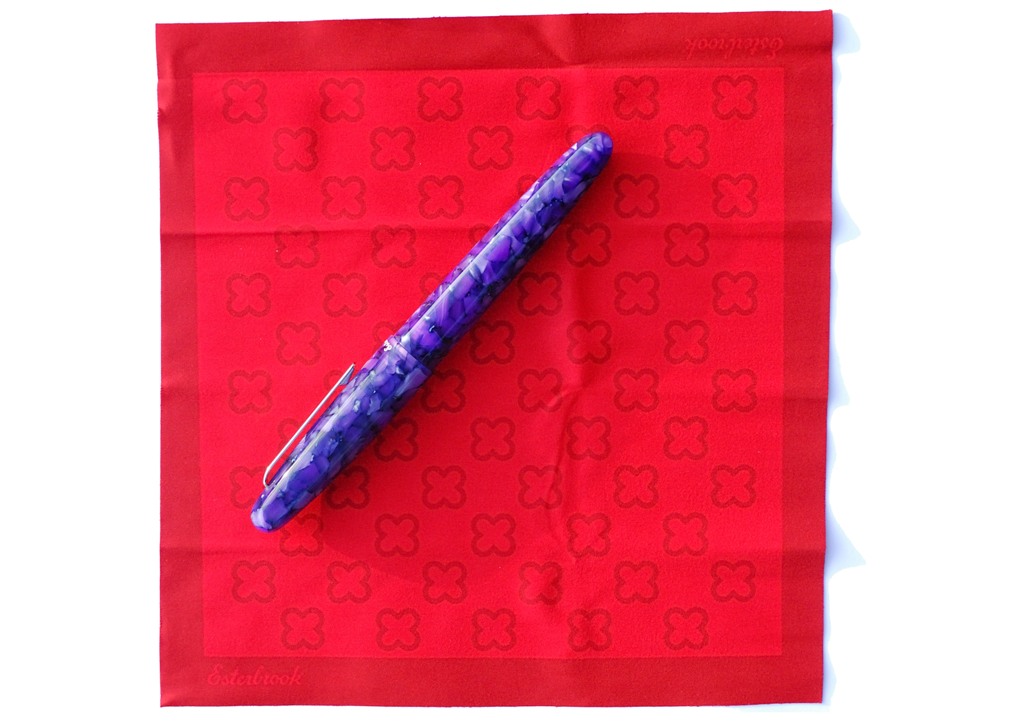
 How it looks The Supra appears, from a distance, to be a Lilliput with a cinched waist. Up close, it’s evident that, if anything, it’s a Lilliput which has been to sumo training camp and bulked-up mightily; this thing has a nice big #6 nib, for starters! Then, if you remove the extension tube, it suddenly looks like a tiddler again. Hmm.
How it looks The Supra appears, from a distance, to be a Lilliput with a cinched waist. Up close, it’s evident that, if anything, it’s a Lilliput which has been to sumo training camp and bulked-up mightily; this thing has a nice big #6 nib, for starters! Then, if you remove the extension tube, it suddenly looks like a tiddler again. Hmm.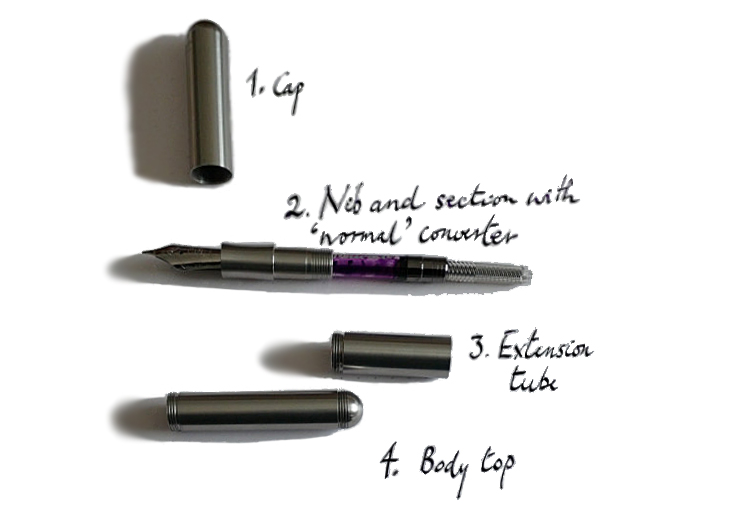 How it feels That extension is the Supra MacGuffin. Fit it between barrel and section, and the result is a standard-length pen which feels about right in the hand, albeit a little long with the cap posted. Omit the extension tube, and the Supra is a pocket pen which feels about right with the cap posted, even if the large #6 nib can be a bit of a surprise to anyone more used to the dainty 060 (small #5) of the Lilliput and Sport models. Once you’ve worked out which length works for you, this feels solid and well-balanced, although the somewhat short grip section might not suit everyone.
How it feels That extension is the Supra MacGuffin. Fit it between barrel and section, and the result is a standard-length pen which feels about right in the hand, albeit a little long with the cap posted. Omit the extension tube, and the Supra is a pocket pen which feels about right with the cap posted, even if the large #6 nib can be a bit of a surprise to anyone more used to the dainty 060 (small #5) of the Lilliput and Sport models. Once you’ve worked out which length works for you, this feels solid and well-balanced, although the somewhat short grip section might not suit everyone.
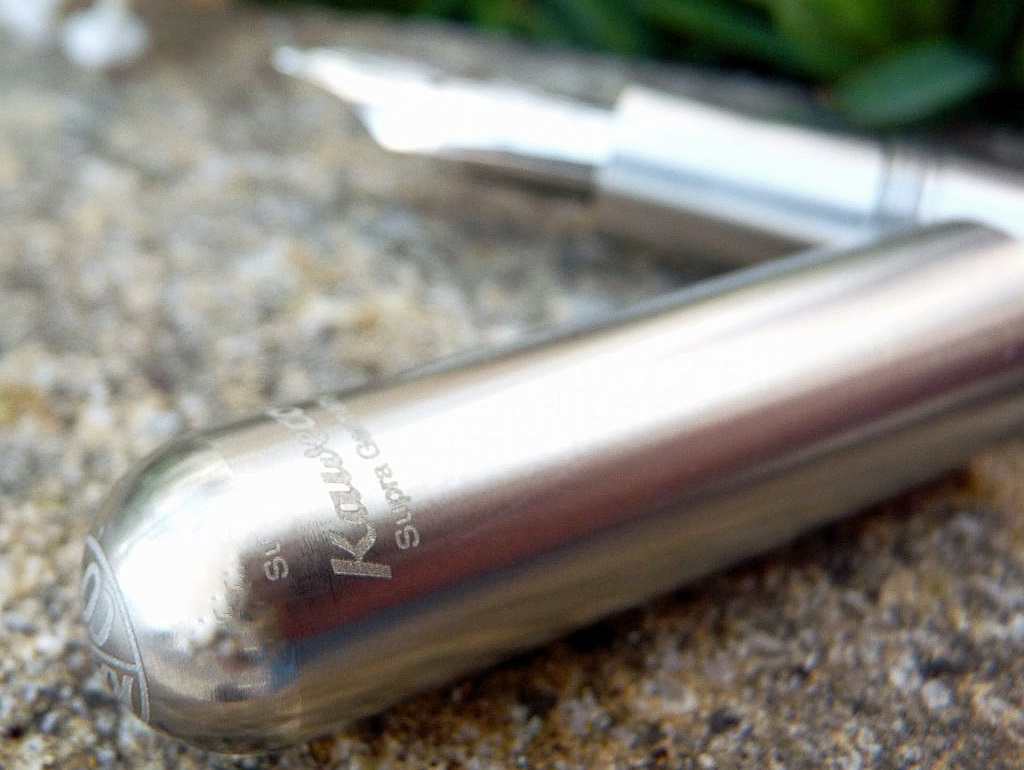

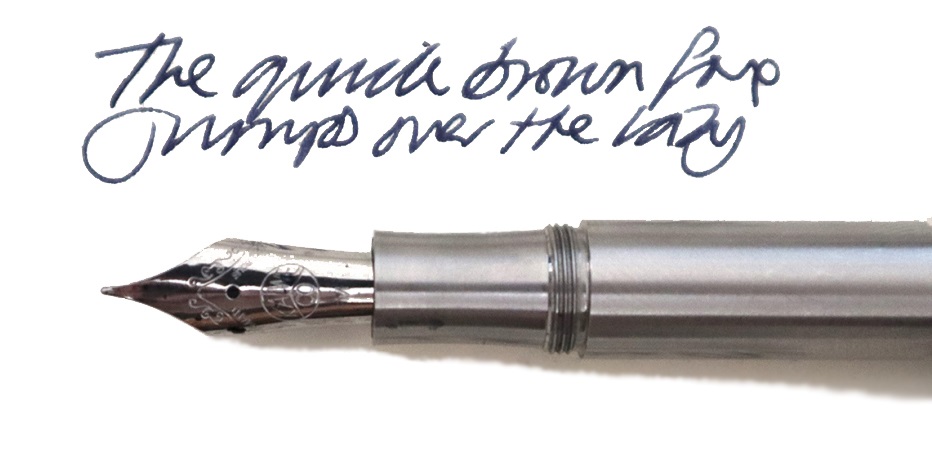 VFM This isn’t cheap, with current retail prices getting dangerously near three figures. It’s a good, solid, reliable fountain pen which will probably outlast most purchasers, but that’s still quite a lot of money for a moderately stylised length of plumbing. Whether the value proposition adds up largely depends upon whether the feel of the pen works for you so well that you want to pick it up again and again. We’d really like to see Kaweco sell the unadorned short-form Supra for those who just want this, with the extension tube available as an optional secondary purchase, both to reduce waste and get that price down a little. In the mean-time, while half of our testers found the pen a bit too heavy and ‘industrial’ for their tastes, the other half loved it and two are now proud owners.
VFM This isn’t cheap, with current retail prices getting dangerously near three figures. It’s a good, solid, reliable fountain pen which will probably outlast most purchasers, but that’s still quite a lot of money for a moderately stylised length of plumbing. Whether the value proposition adds up largely depends upon whether the feel of the pen works for you so well that you want to pick it up again and again. We’d really like to see Kaweco sell the unadorned short-form Supra for those who just want this, with the extension tube available as an optional secondary purchase, both to reduce waste and get that price down a little. In the mean-time, while half of our testers found the pen a bit too heavy and ‘industrial’ for their tastes, the other half loved it and two are now proud owners.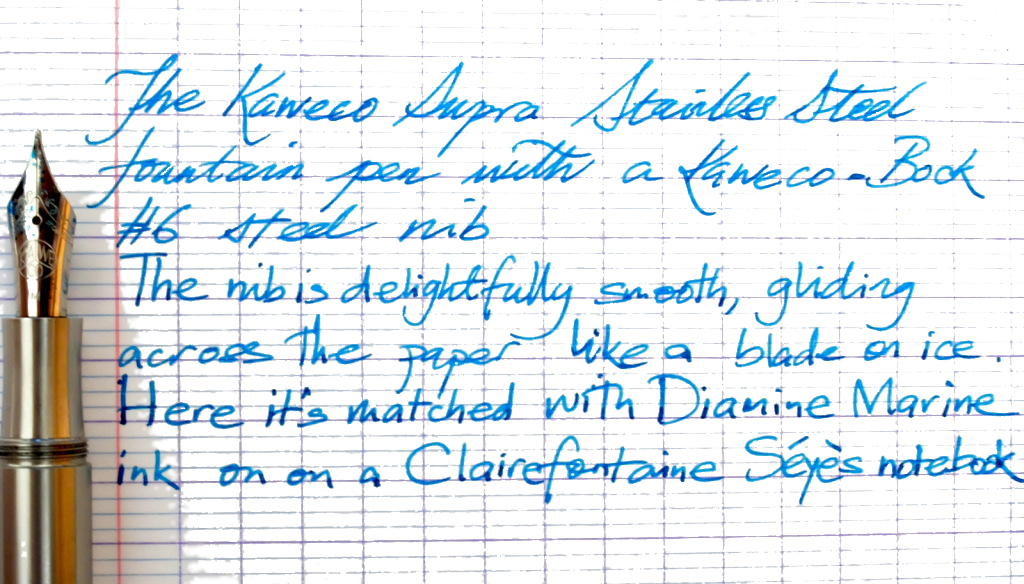
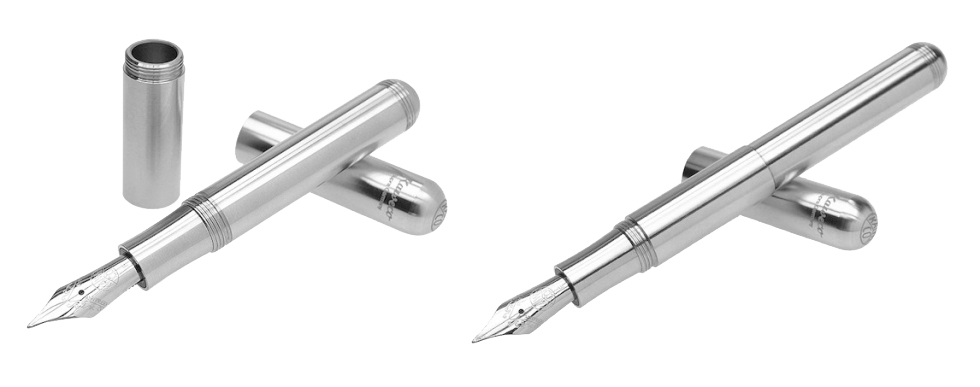 Our overall recommendation As is so often the case, try before you by. As a heavy, uncompromising and essentially indestructible pen it won’t be everyone’s cup of tea. But if you’re the sort of rugged EDC fan who likes to be able to smash your way out of a burning car using the same pen that you deploy to write a note to the insurers immediately afterwards, a Bauhaus-toting art-school grad with strong hands, or just a sniper with literary aspirations, this is absolutely the pen for you.
Our overall recommendation As is so often the case, try before you by. As a heavy, uncompromising and essentially indestructible pen it won’t be everyone’s cup of tea. But if you’re the sort of rugged EDC fan who likes to be able to smash your way out of a burning car using the same pen that you deploy to write a note to the insurers immediately afterwards, a Bauhaus-toting art-school grad with strong hands, or just a sniper with literary aspirations, this is absolutely the pen for you.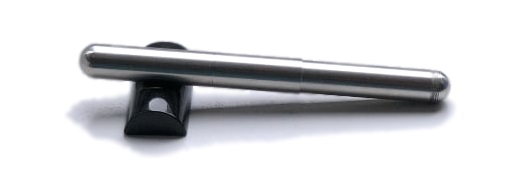
 This meta-review references:
This meta-review references: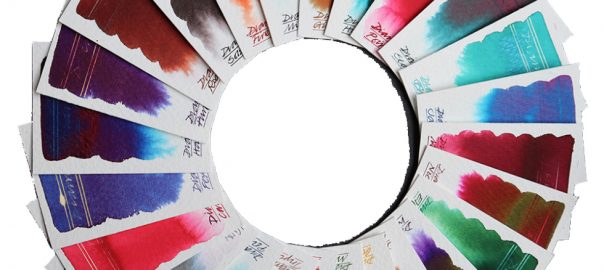
 How it looks It looks much like an ordinary advent calendar with something boring like chocolate inside, but that’s just a cunning disguise. There’s a jolly snowman design printed in blue, which might be why the inks are now labelled as ‘Blue Edition’… but that’s probably not what you wanted to know about. The new bottles are amazing four-legged contraptions which look like they could canter away at any moment if you don’t put down that wretched ballpoint and play with a real pen. But perhaps that’s not what you’re after either? Oh – the inks!! Well they look amazing as a range, don’t they? We were a little surprised to find quite so many browns and dark greens, but the whole palette of midwinter hues is here. There are also plenty of traditionally festive reds, some very groovy blues, a gold, a silver, two cracking purples and a terrific turquoise. Unusually for a set released together, some are ‘solid colours’ but many feature sheen, shimmer or both, which is showing off really, but if you can’t do that on special days when can you?
How it looks It looks much like an ordinary advent calendar with something boring like chocolate inside, but that’s just a cunning disguise. There’s a jolly snowman design printed in blue, which might be why the inks are now labelled as ‘Blue Edition’… but that’s probably not what you wanted to know about. The new bottles are amazing four-legged contraptions which look like they could canter away at any moment if you don’t put down that wretched ballpoint and play with a real pen. But perhaps that’s not what you’re after either? Oh – the inks!! Well they look amazing as a range, don’t they? We were a little surprised to find quite so many browns and dark greens, but the whole palette of midwinter hues is here. There are also plenty of traditionally festive reds, some very groovy blues, a gold, a silver, two cracking purples and a terrific turquoise. Unusually for a set released together, some are ‘solid colours’ but many feature sheen, shimmer or both, which is showing off really, but if you can’t do that on special days when can you?





 This meta-review references:
This meta-review references: Thanks to Diamine for inundating us with a postcard from quite near North Wales, actually, and an awful lot of sample pots.
Thanks to Diamine for inundating us with a postcard from quite near North Wales, actually, and an awful lot of sample pots.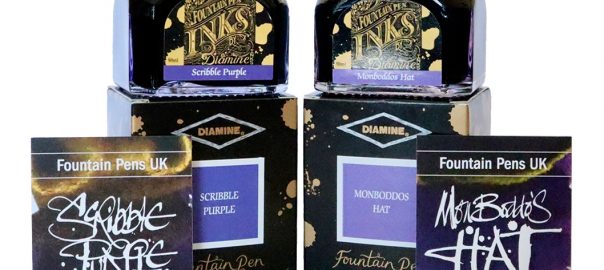
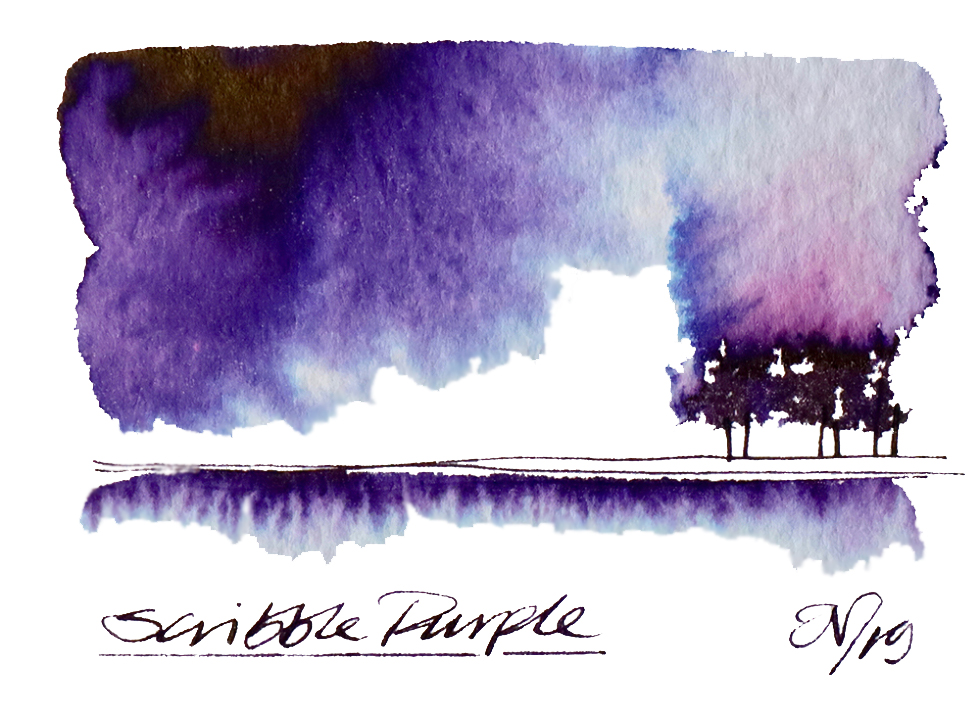
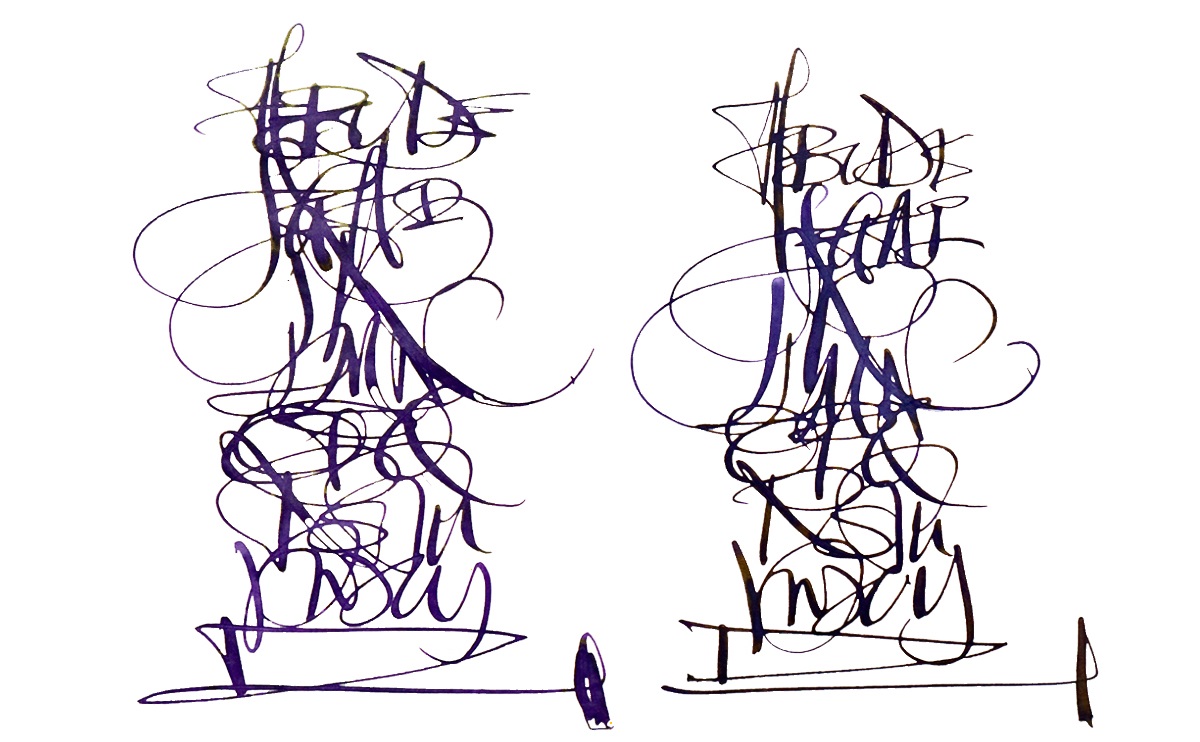
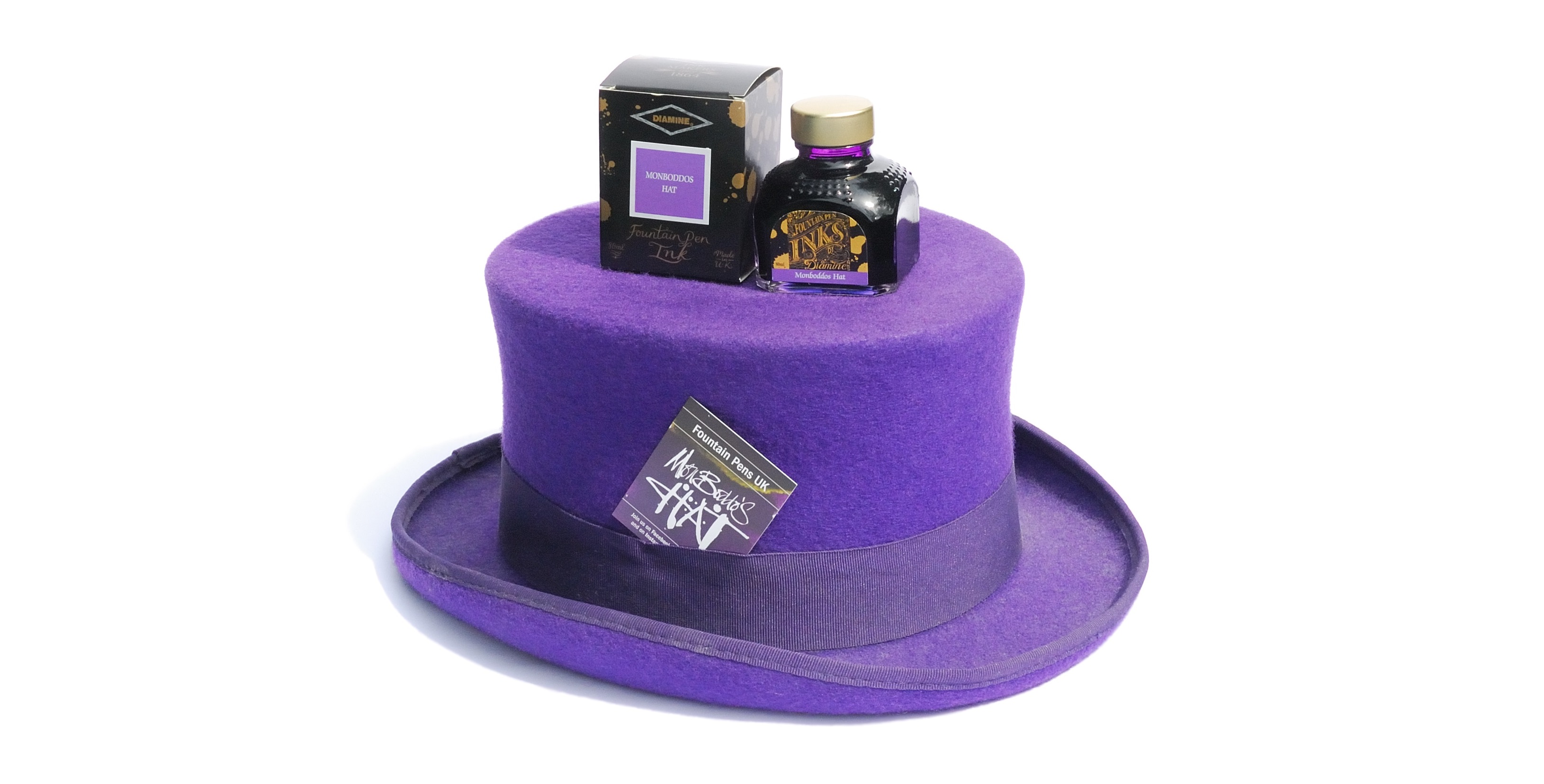
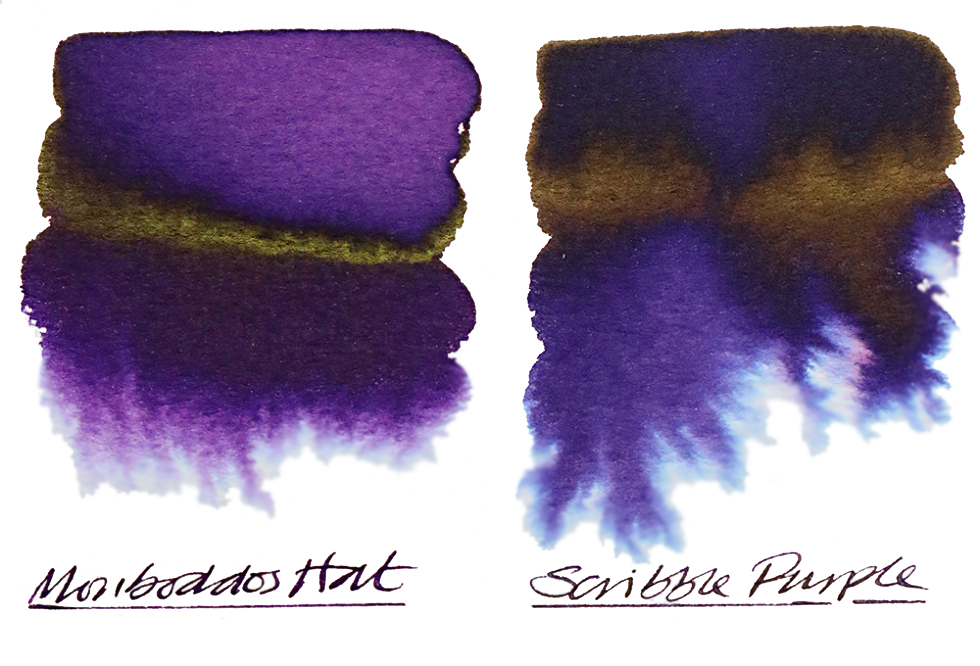
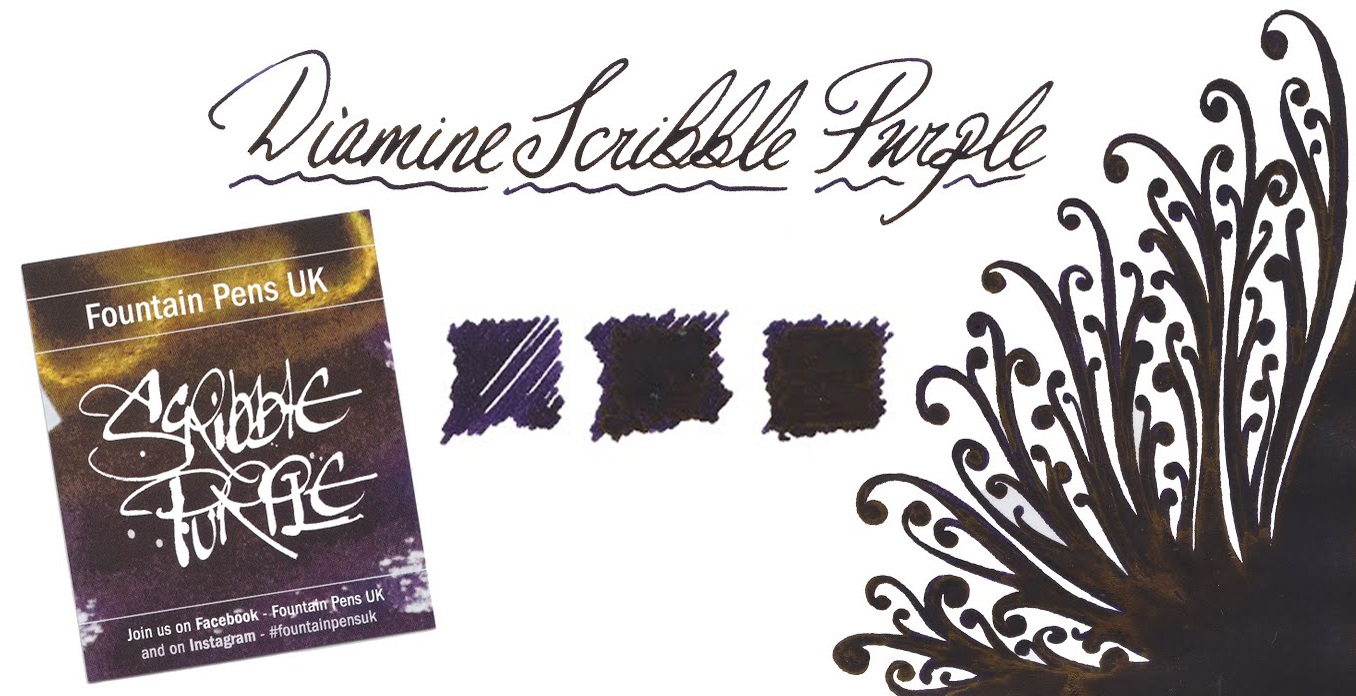
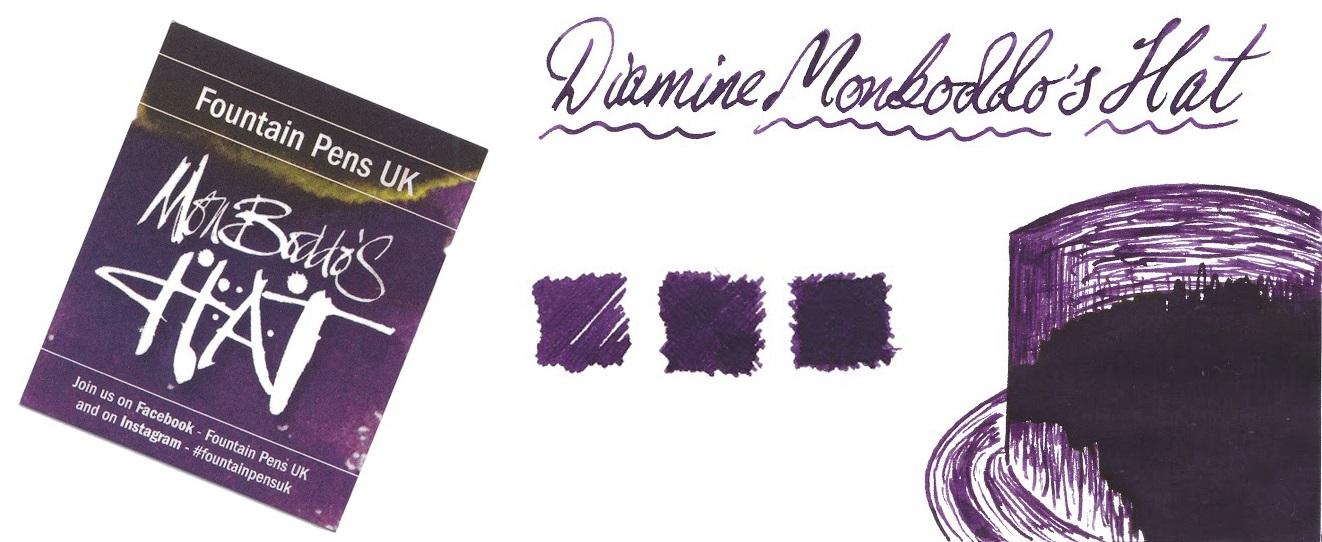
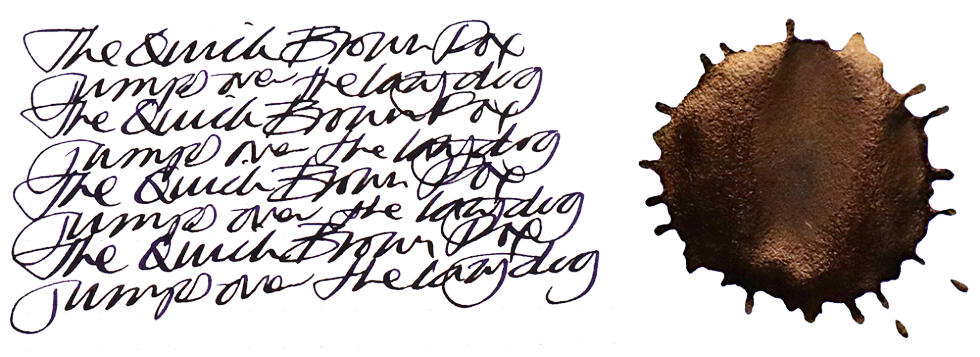
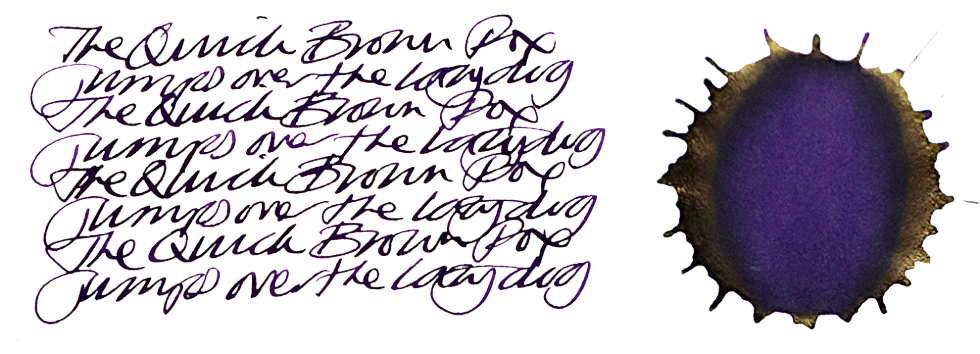
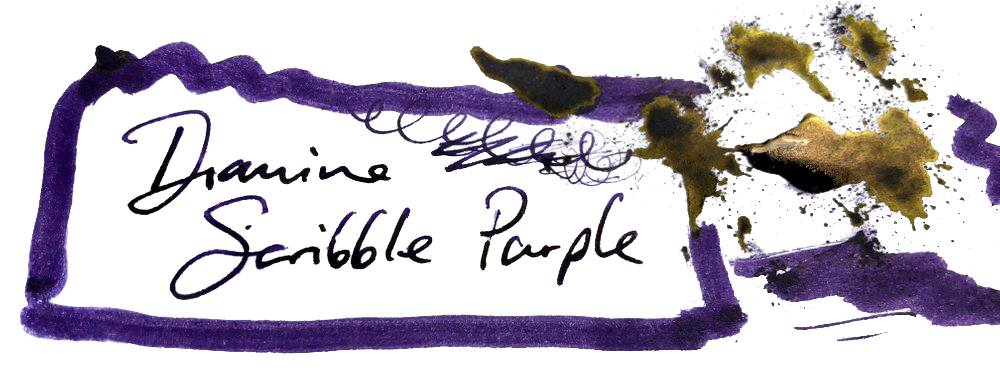
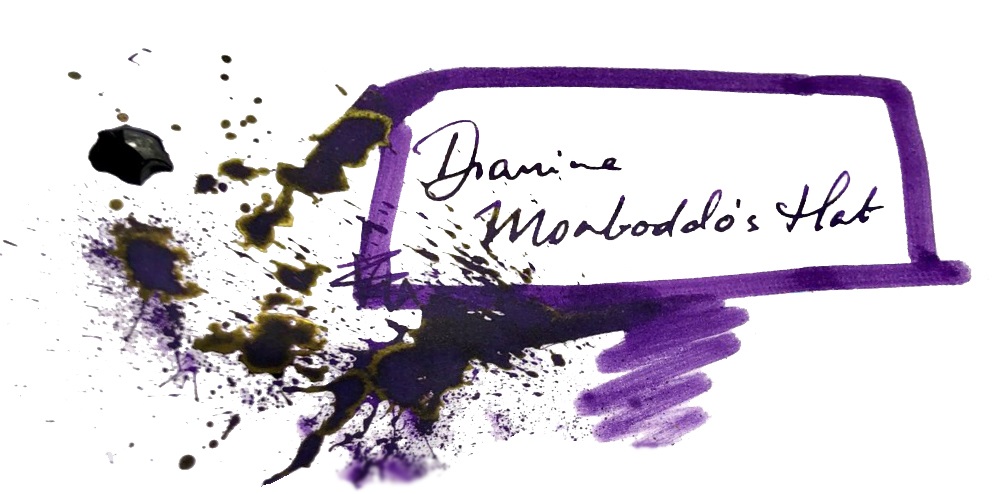
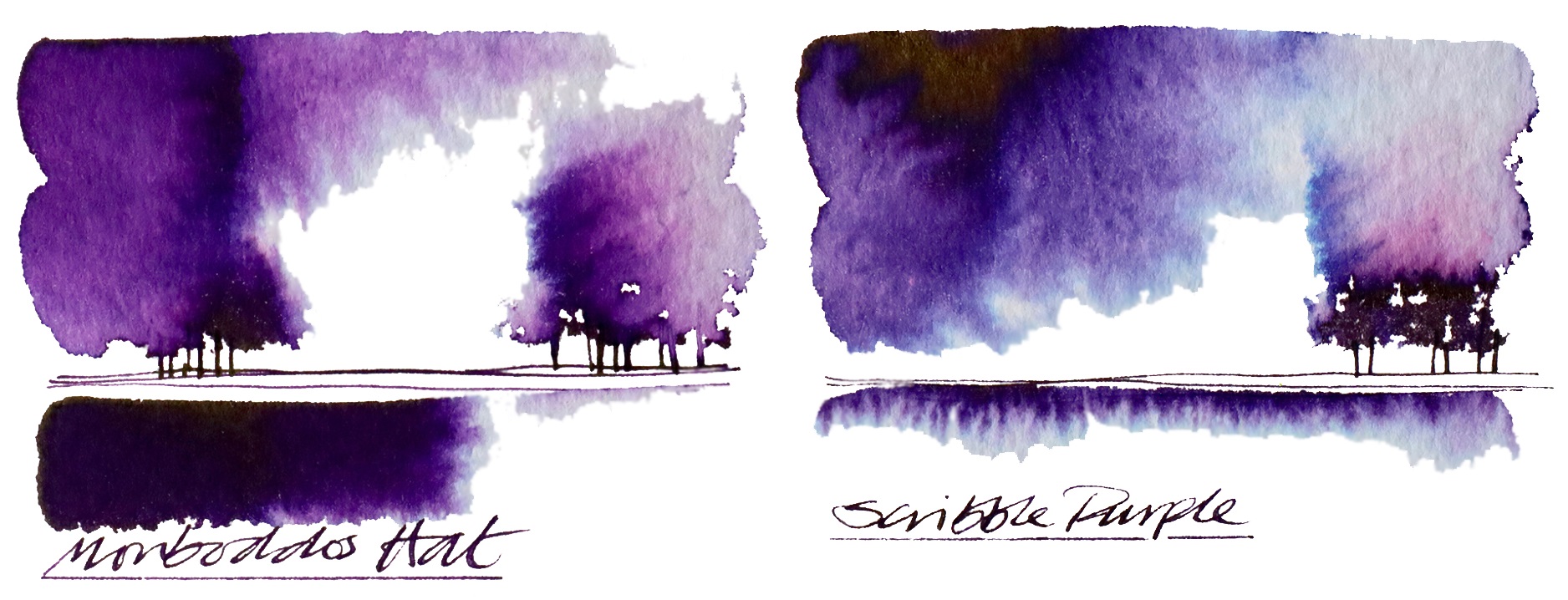
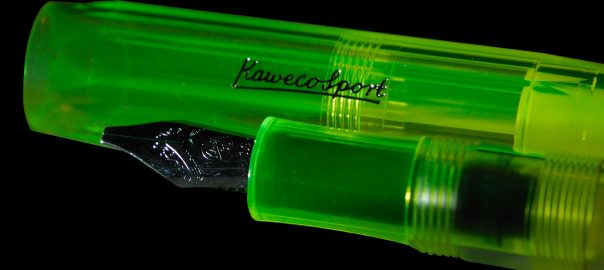
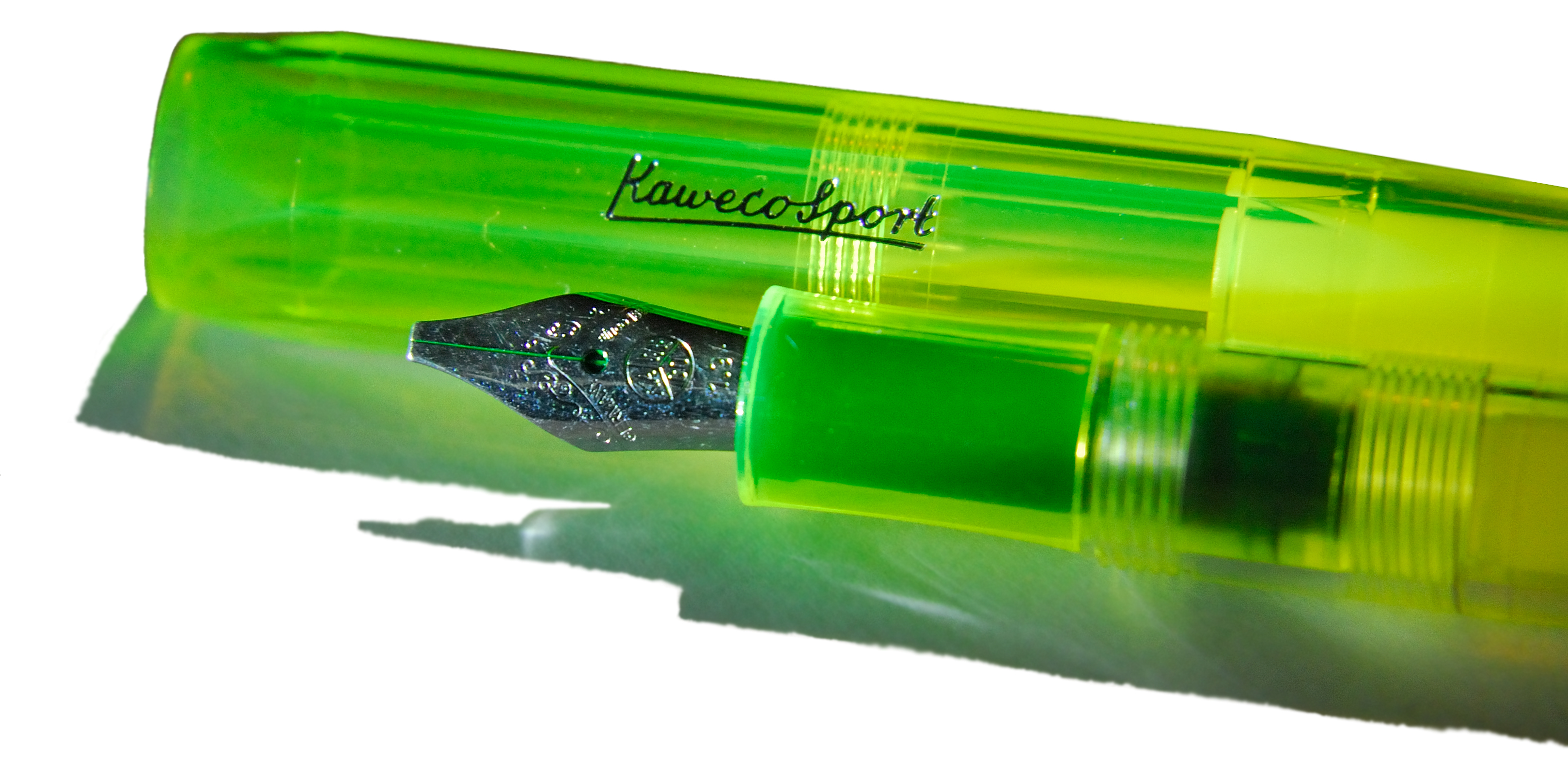 A little bit of history On the other side of the Atlantic, different religious sects still have their own universities; you can, if you so wish, attend seats of learning gathered under the sway of belief systems not even recognised by the rest of the world, but we shall name no names. A Jesuit university is a relatively mainstream concept compared with some of the more outré outliers, albeit perhaps a surprising place to train as an industrial chemist – but Frank Honn graduated from one such, and went on to discover a novel use for the fluorescent dye pyranine as the first highlighting ink. It was a success, by any standards, and generations of pupils have grown up with felt-tip pens full of the stuff ever since. But felt-tips are horrible, and fountain pens are not, so Kaweco set out to make a highlighter that persons of taste might actually be able to contemplate using.
A little bit of history On the other side of the Atlantic, different religious sects still have their own universities; you can, if you so wish, attend seats of learning gathered under the sway of belief systems not even recognised by the rest of the world, but we shall name no names. A Jesuit university is a relatively mainstream concept compared with some of the more outré outliers, albeit perhaps a surprising place to train as an industrial chemist – but Frank Honn graduated from one such, and went on to discover a novel use for the fluorescent dye pyranine as the first highlighting ink. It was a success, by any standards, and generations of pupils have grown up with felt-tip pens full of the stuff ever since. But felt-tips are horrible, and fountain pens are not, so Kaweco set out to make a highlighter that persons of taste might actually be able to contemplate using.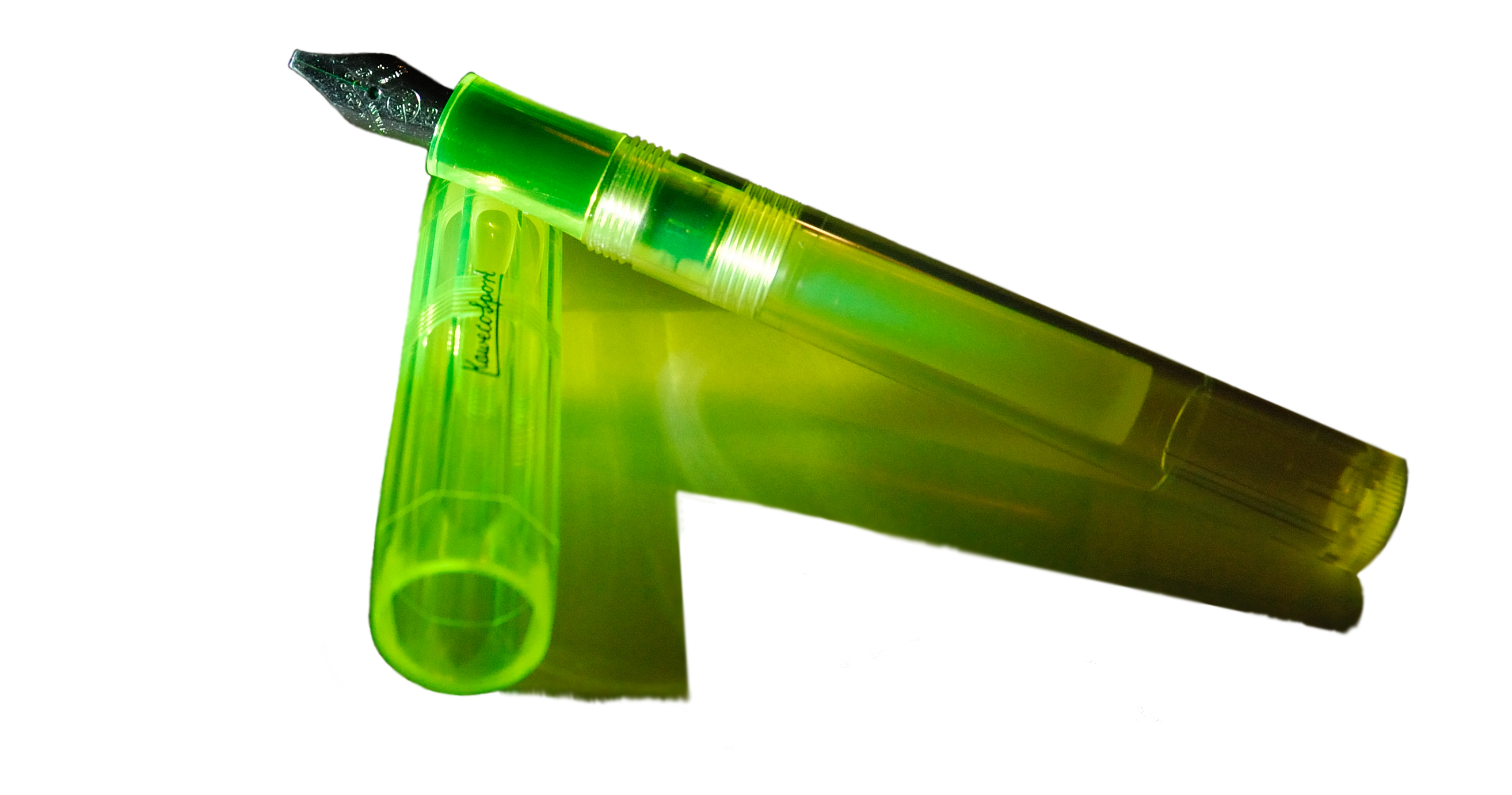 How it looks Did we say this was tasteful? Well, maybe it depends upon your own taste! It’s certainly rather loud – but there’s no mistaking what it’s for.
How it looks Did we say this was tasteful? Well, maybe it depends upon your own taste! It’s certainly rather loud – but there’s no mistaking what it’s for.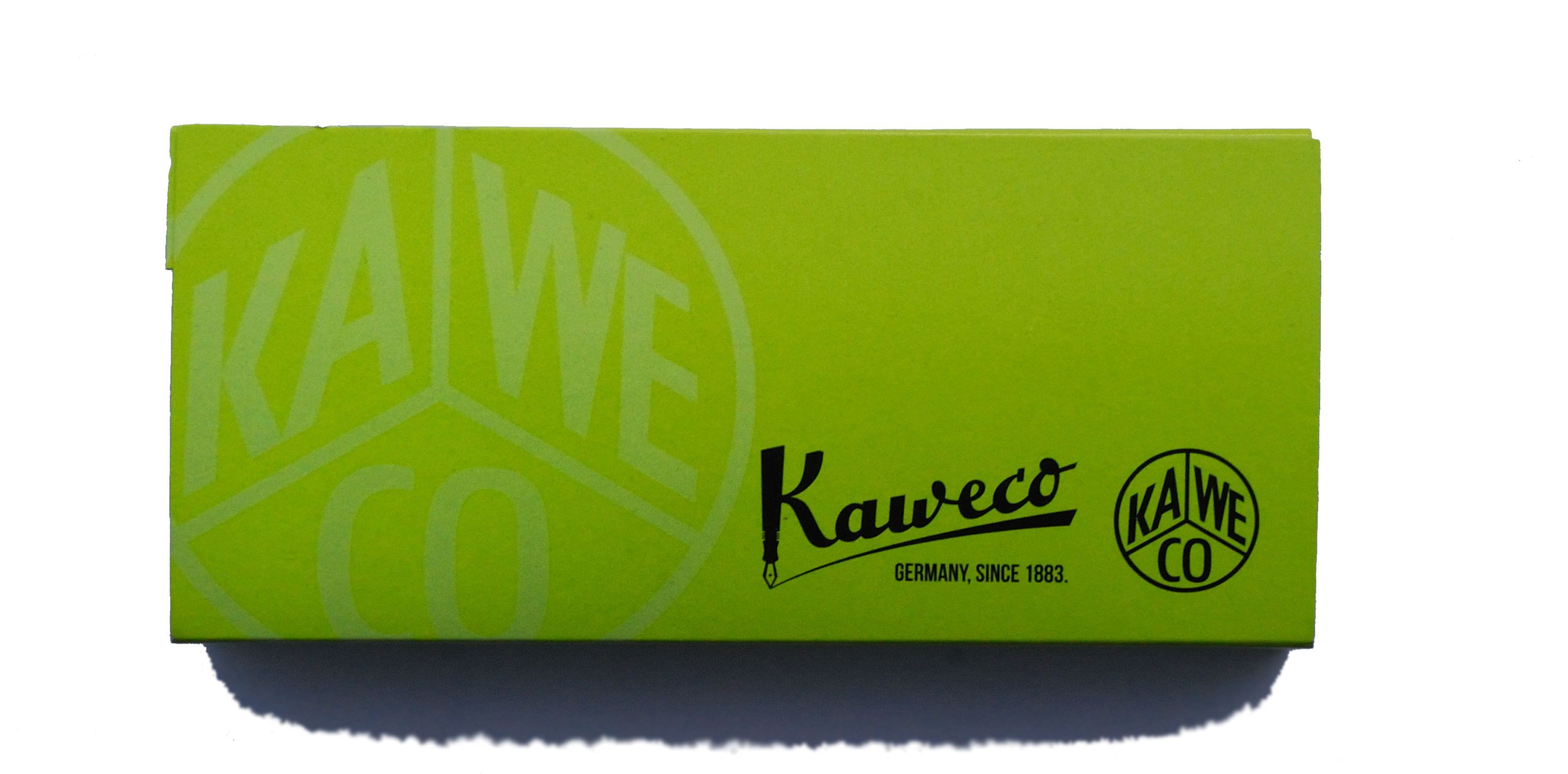
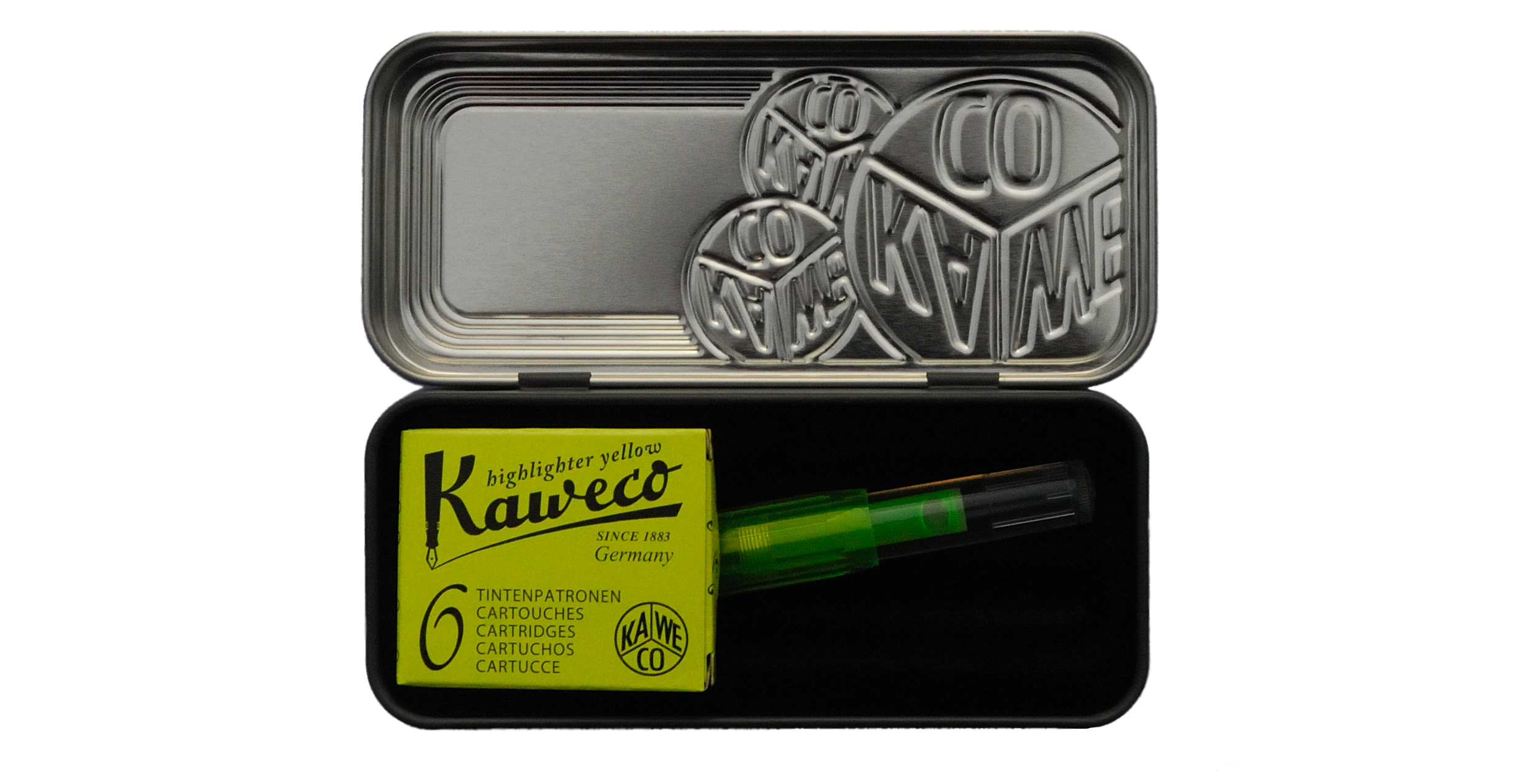 How it fills Via cartridges specially filled with unworldly glowing fluids.
How it fills Via cartridges specially filled with unworldly glowing fluids.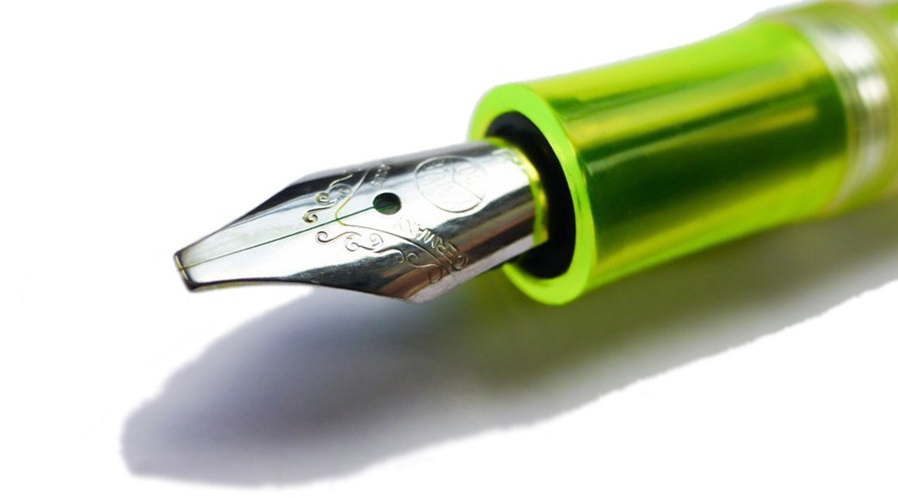
 Pen! What is it good for? It’s good for making up documents for editing or review, of course. It would probably also be good for baffling pen thieves in the work place; this is one pen which the ballpoint brigade won’t know where to even start with!
Pen! What is it good for? It’s good for making up documents for editing or review, of course. It would probably also be good for baffling pen thieves in the work place; this is one pen which the ballpoint brigade won’t know where to even start with!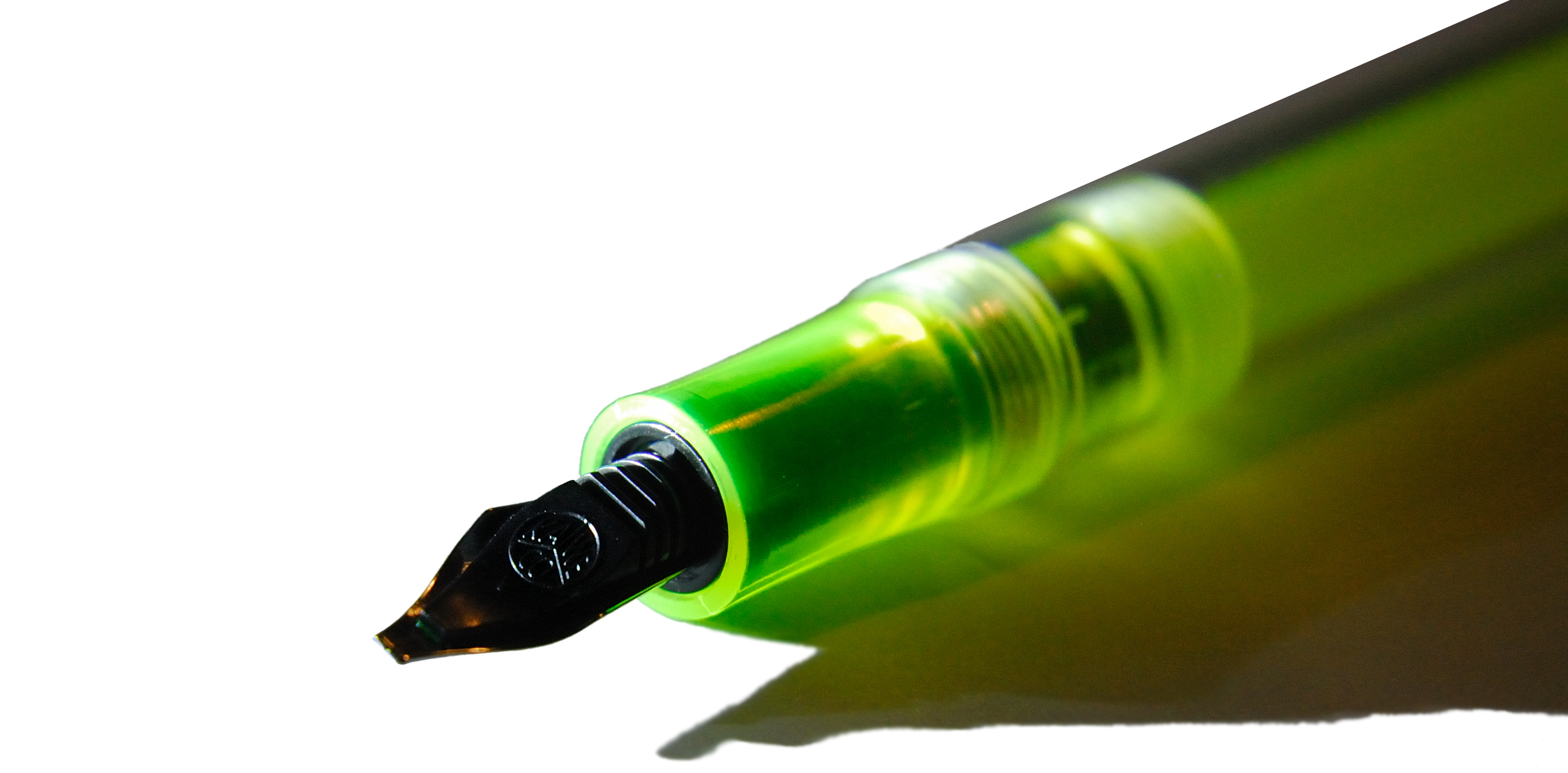 VFM Shop around a bit and you can get this set, complete with a box of cartridges, for less than £30. Admittedly that would buy a lot of nasty cheap disposable highlighters, but you’d hate them – and this will probably last for decades. Fair value, then.
VFM Shop around a bit and you can get this set, complete with a box of cartridges, for less than £30. Admittedly that would buy a lot of nasty cheap disposable highlighters, but you’d hate them – and this will probably last for decades. Fair value, then.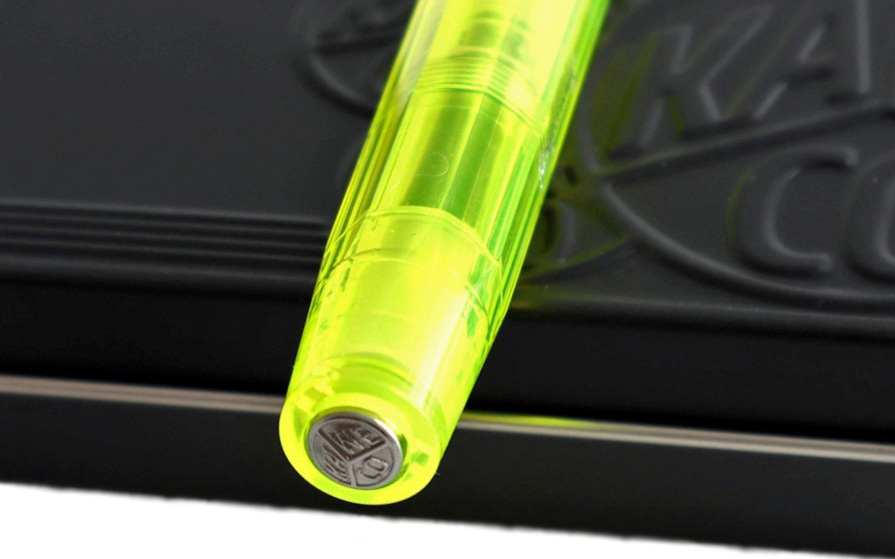
 Our overall recommendation Think about whether you really do all that much highlighting, and perhaps invest in a pack of the highlighter ink cartridges first to see if you take to using an italic fountain pen for this purpose – but if the answer to both is yes then this is, like pyranine, a ready solution.
Our overall recommendation Think about whether you really do all that much highlighting, and perhaps invest in a pack of the highlighter ink cartridges first to see if you take to using an italic fountain pen for this purpose – but if the answer to both is yes then this is, like pyranine, a ready solution.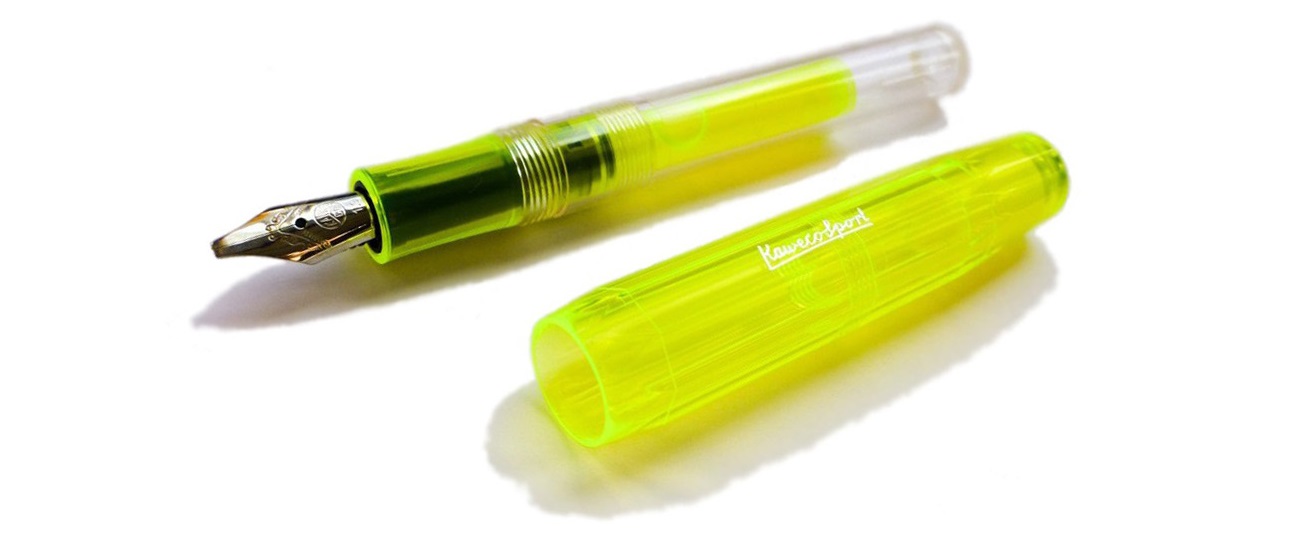
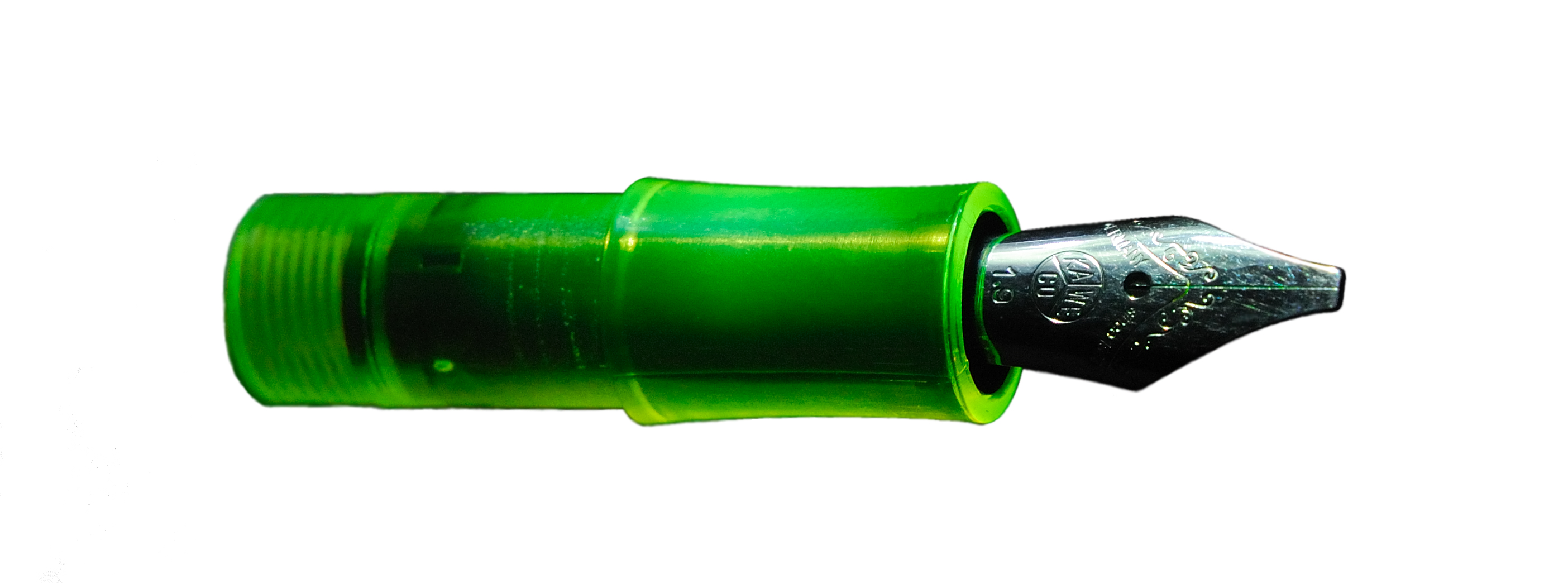 This meta-review references:
This meta-review references: Thanks to Kaweco for the review sample.
Thanks to Kaweco for the review sample.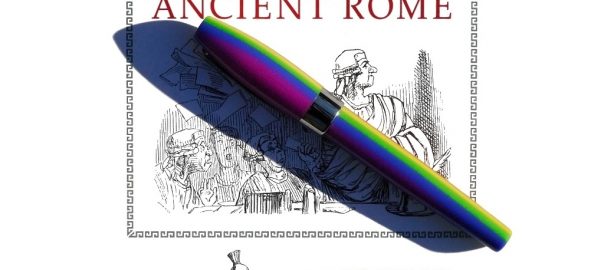
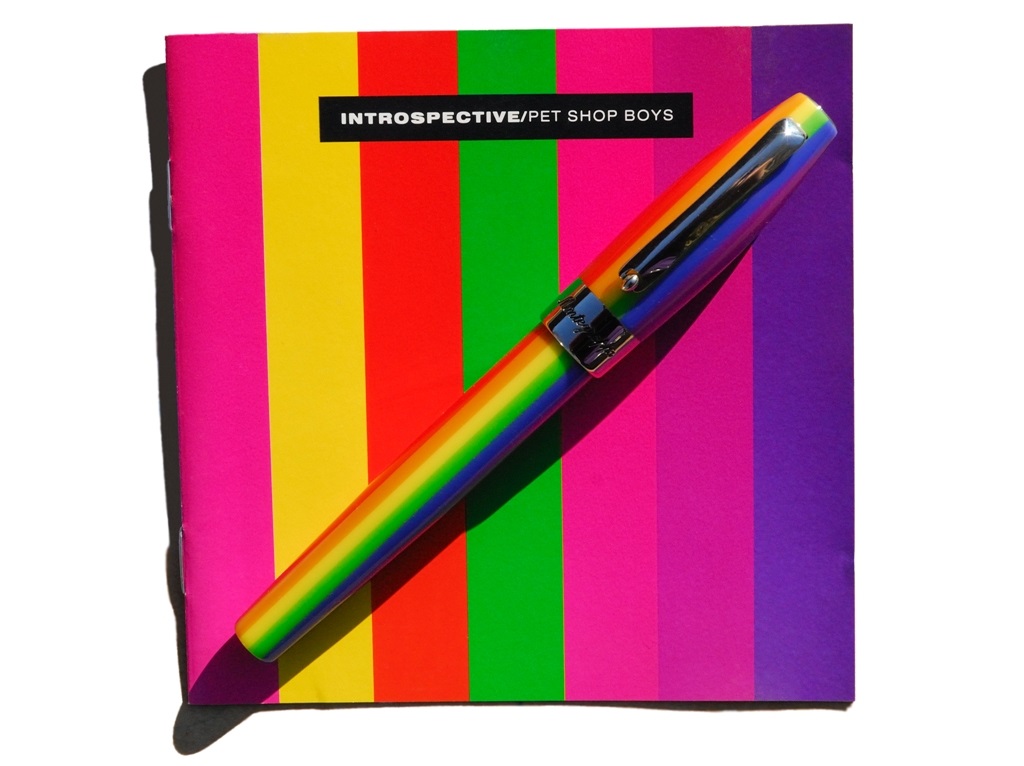
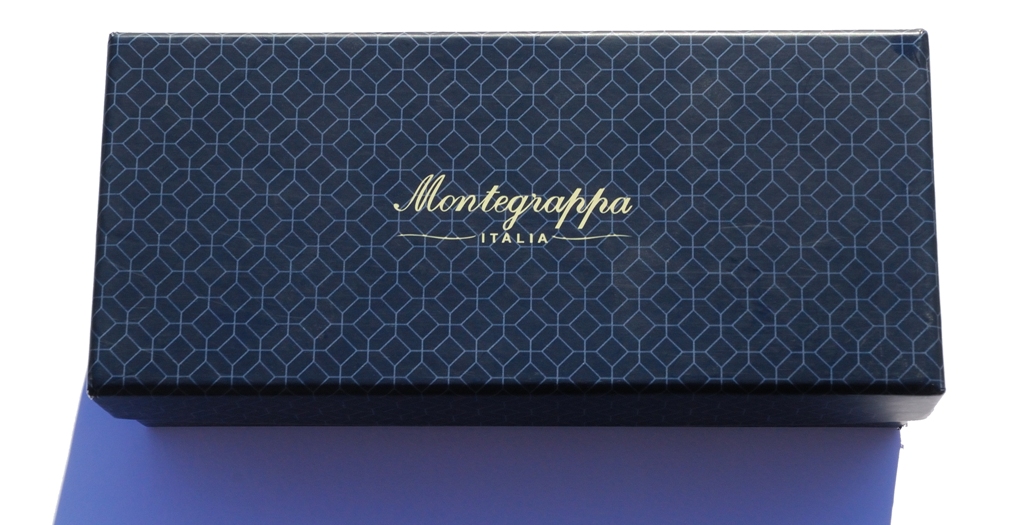
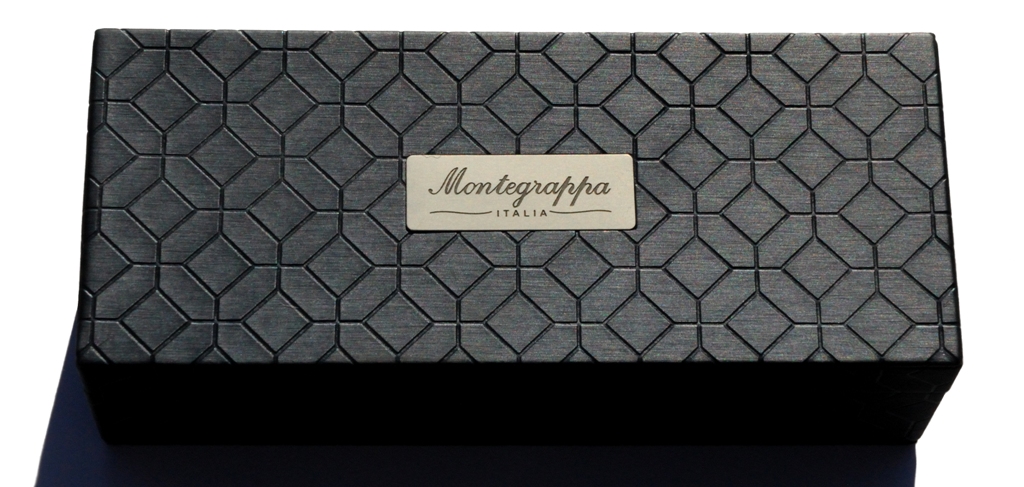
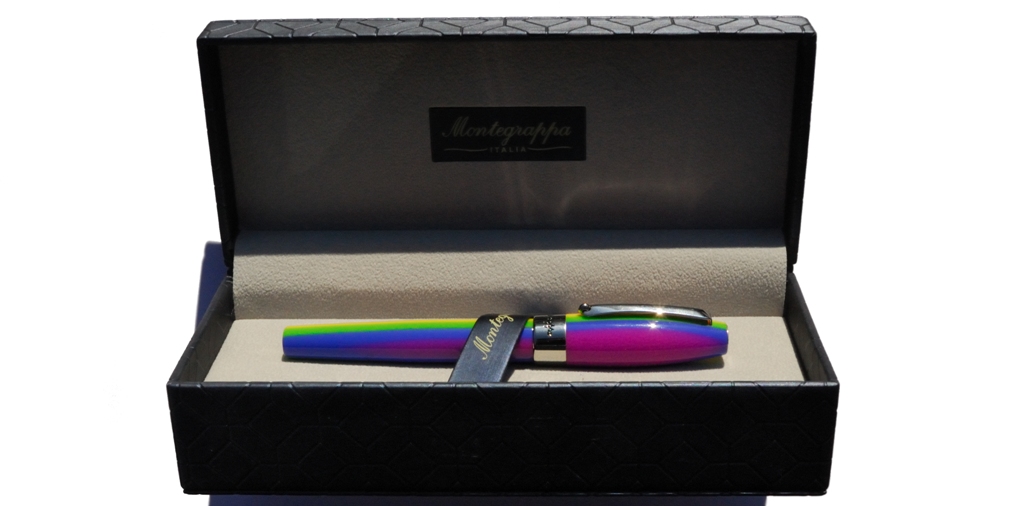
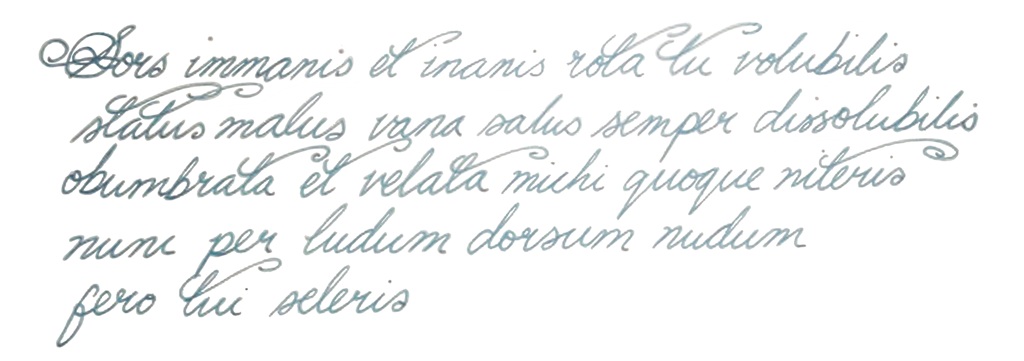
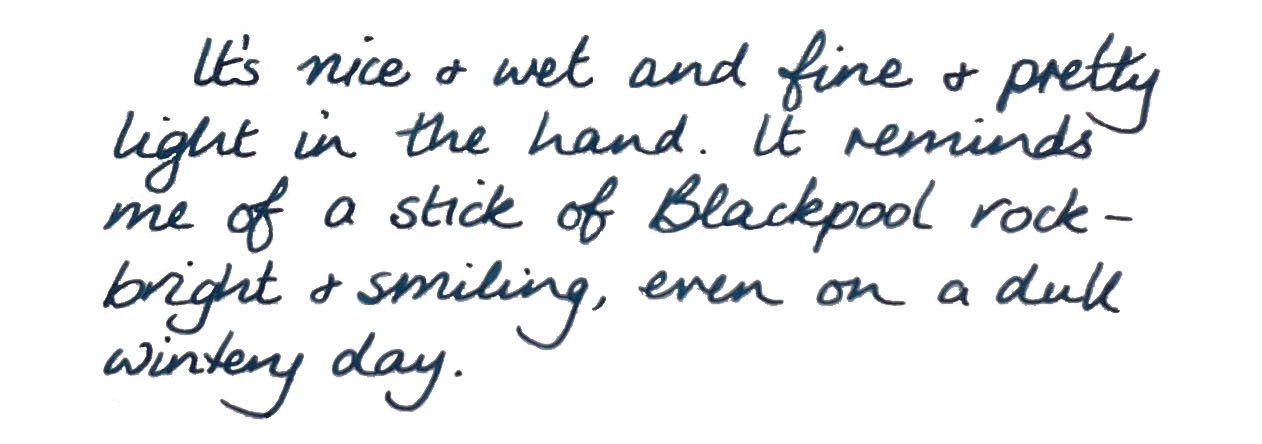

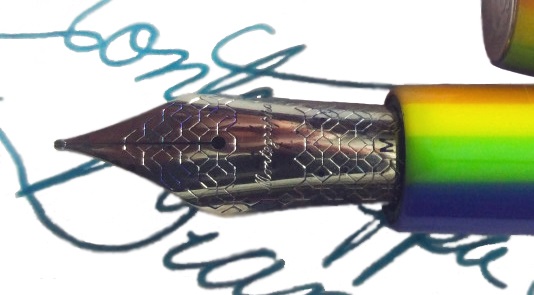
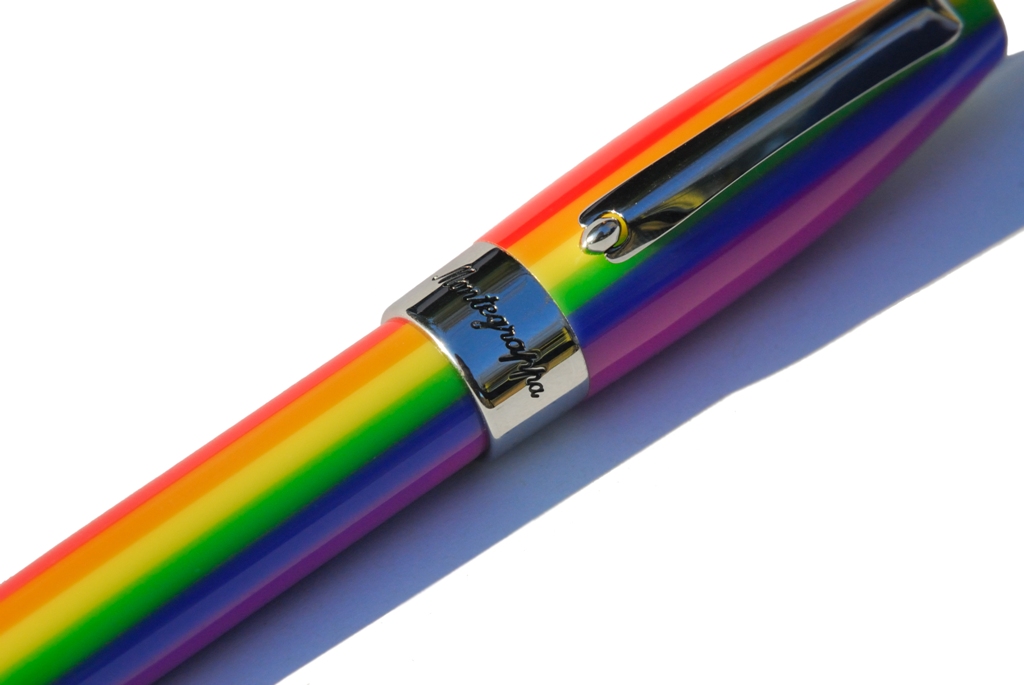
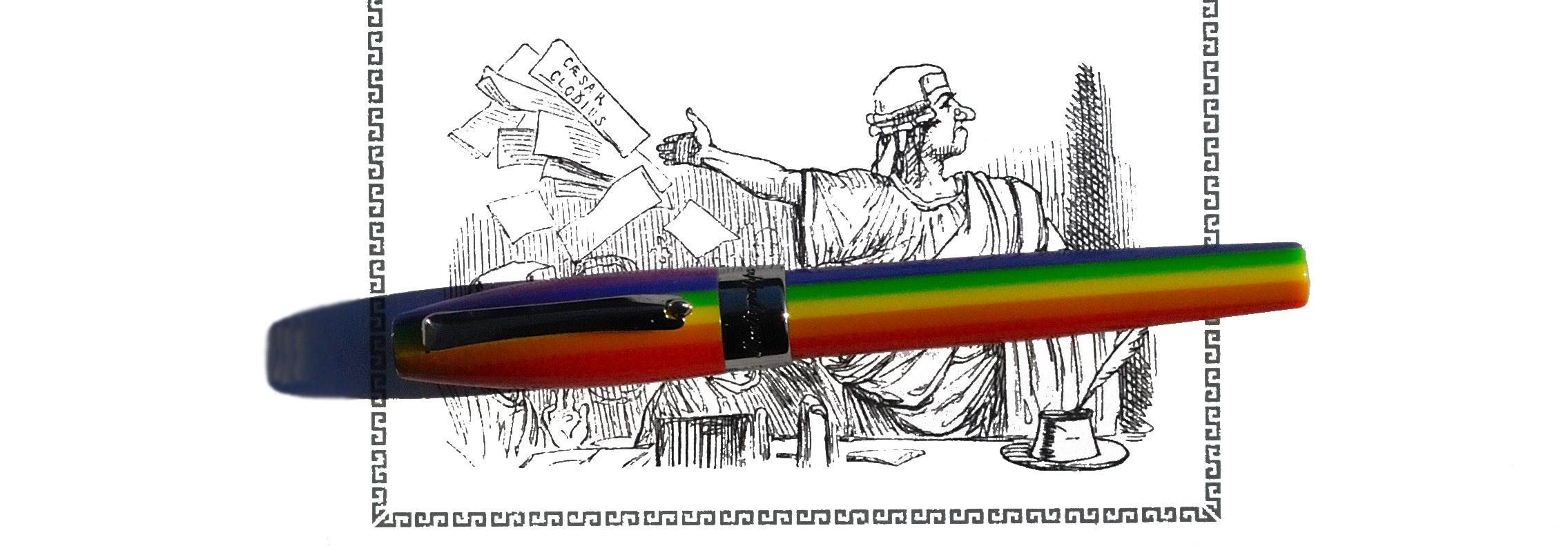 Our overall recommendation If you love the look, and can find it on special offer, go for it – then switch to a JoWo or Bock business end.
Our overall recommendation If you love the look, and can find it on special offer, go for it – then switch to a JoWo or Bock business end. Where to get hold of one If you want to spend £230 on this steel-nibbed pen – and, admittedly, get a pashmina thrown-in to the deal – then try
Where to get hold of one If you want to spend £230 on this steel-nibbed pen – and, admittedly, get a pashmina thrown-in to the deal – then try 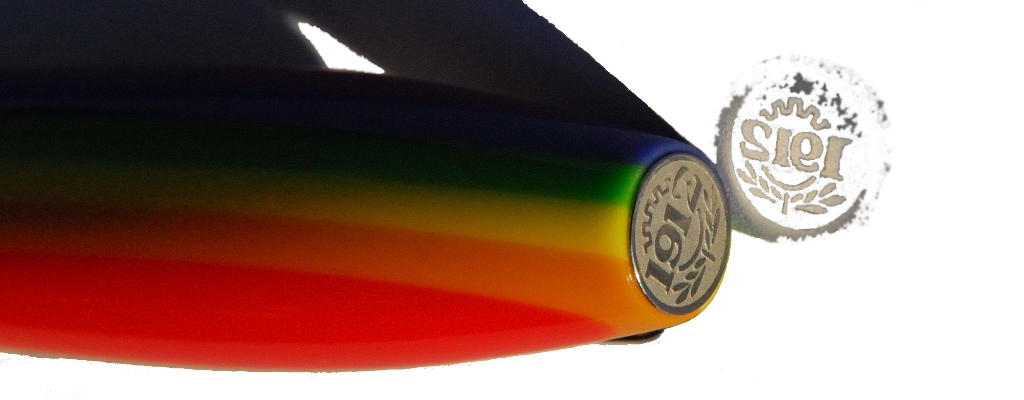
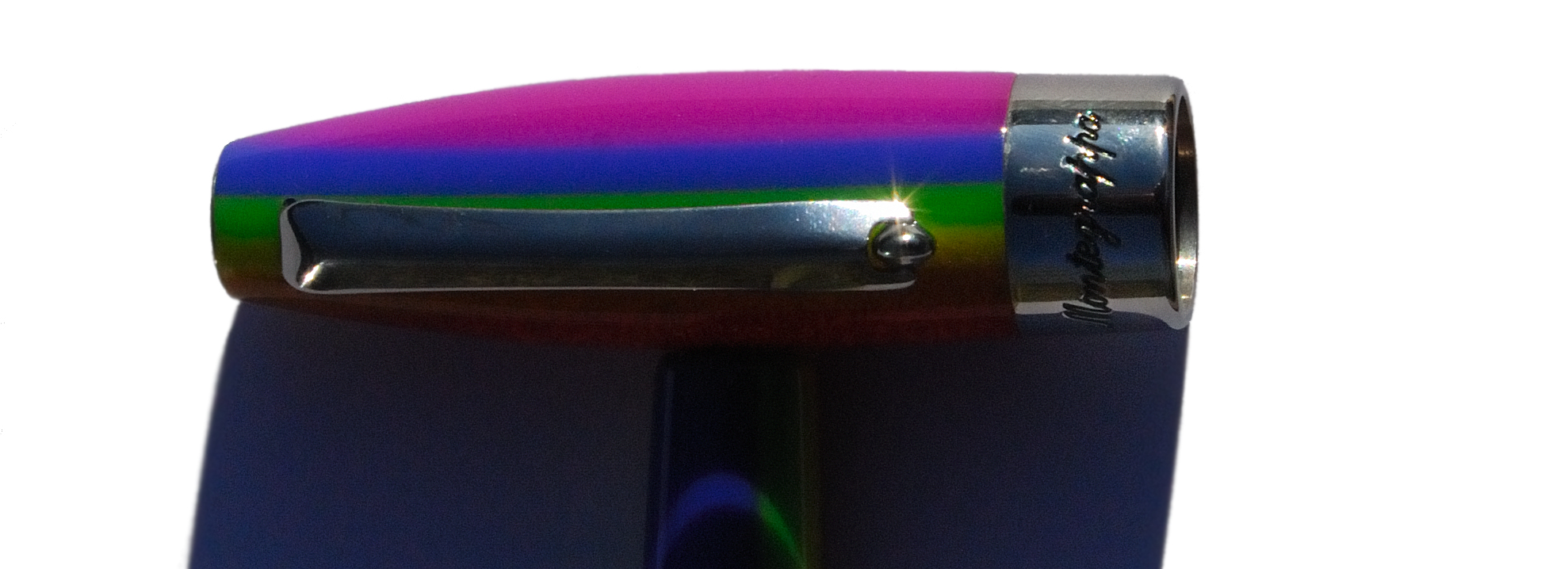
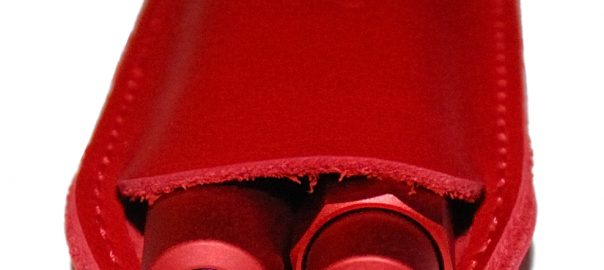
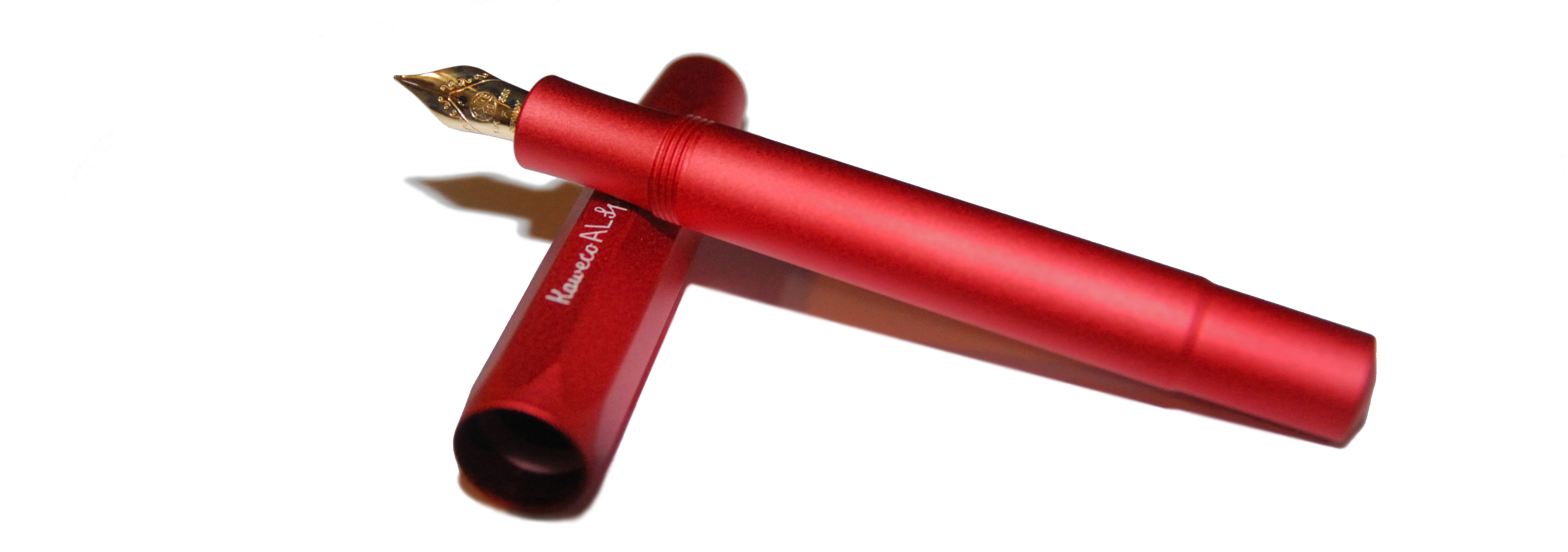 How it looks Very deep red, matt, lustrous and slightly shiny. Paired with the pencil and popped into a ‘chilli red’ sleeve, it looks irresistibly good.
How it looks Very deep red, matt, lustrous and slightly shiny. Paired with the pencil and popped into a ‘chilli red’ sleeve, it looks irresistibly good.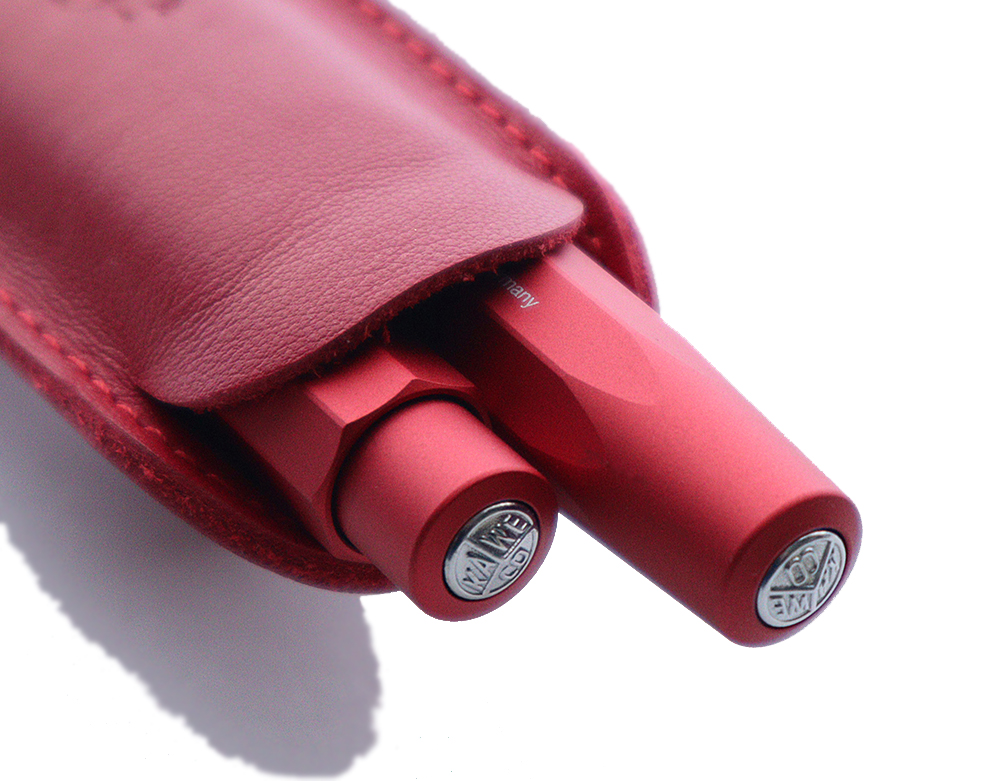 How it feels Light but tactile. Unless you specifically prefer heavier pens like the brass Sport (as some of us do!), this is a good mid-point on the mass spectrum.
How it feels Light but tactile. Unless you specifically prefer heavier pens like the brass Sport (as some of us do!), this is a good mid-point on the mass spectrum.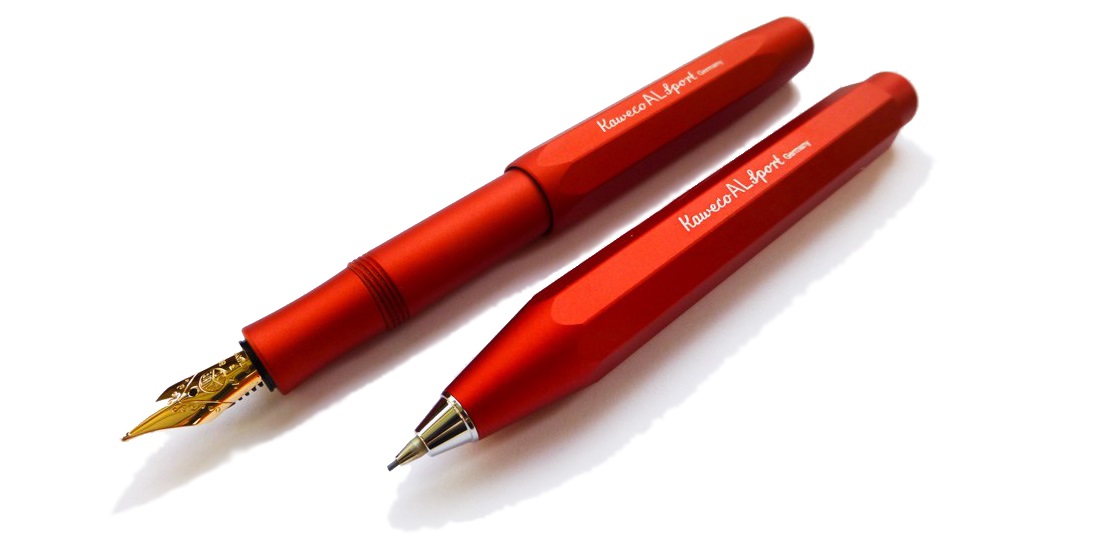 How it fills As with all Sports this is a straightforward short international cartridge number. There is a converter, and it does work, but the fluid capacity is so limited that investing in a syringe is often the best tactic for long-term cohabitation with this petite performer. The pencil takes 0.7mm lead, and there’s plenty of that around.
How it fills As with all Sports this is a straightforward short international cartridge number. There is a converter, and it does work, but the fluid capacity is so limited that investing in a syringe is often the best tactic for long-term cohabitation with this petite performer. The pencil takes 0.7mm lead, and there’s plenty of that around.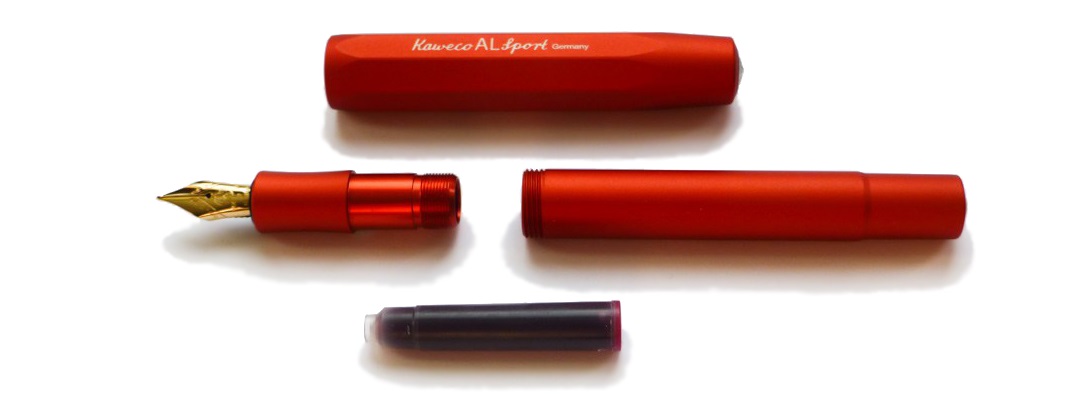 Crucially, how it writes… We rather decadently dropped a gold nib into the test pen, and it wrote very nicely; not much springiness, but just a touch of softness. The standard nibs are getting better these days, too!
Crucially, how it writes… We rather decadently dropped a gold nib into the test pen, and it wrote very nicely; not much springiness, but just a touch of softness. The standard nibs are getting better these days, too!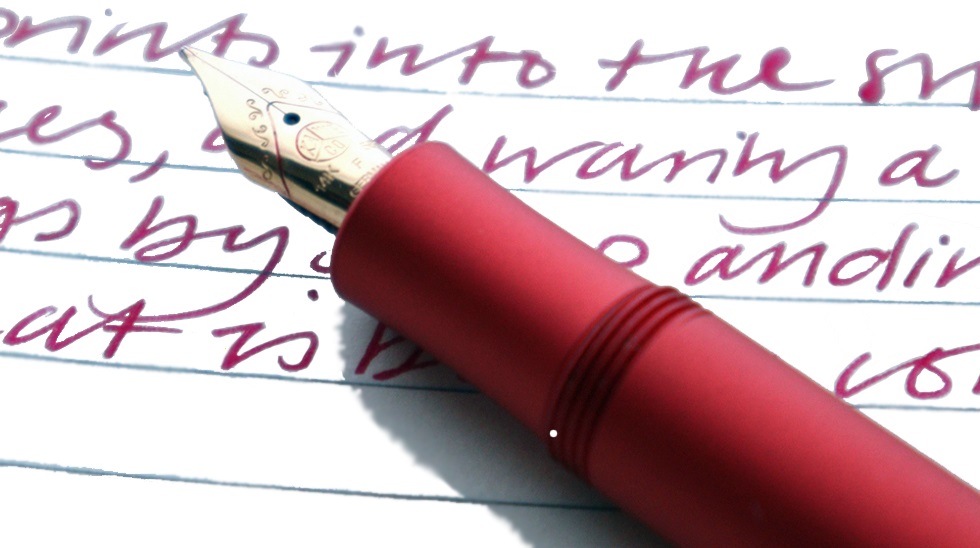
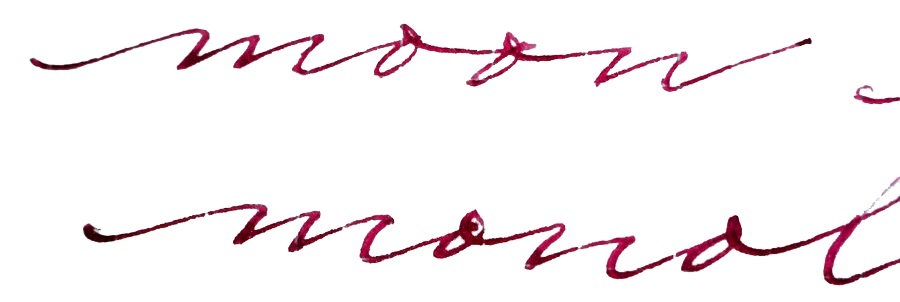
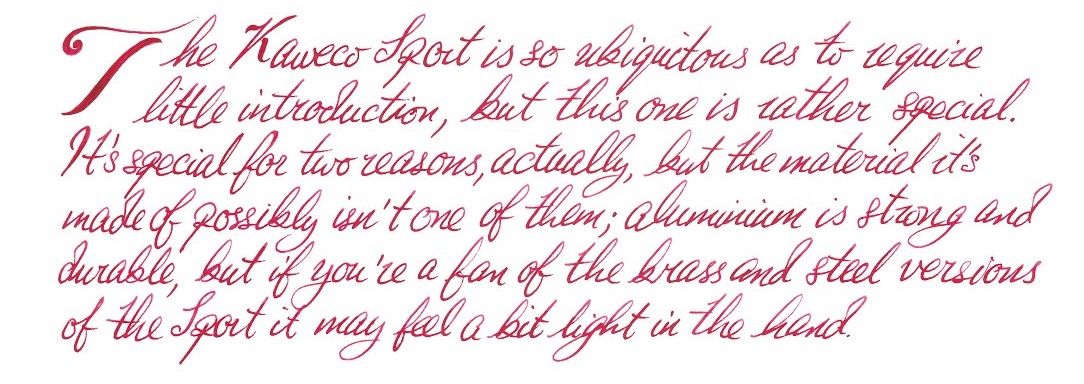
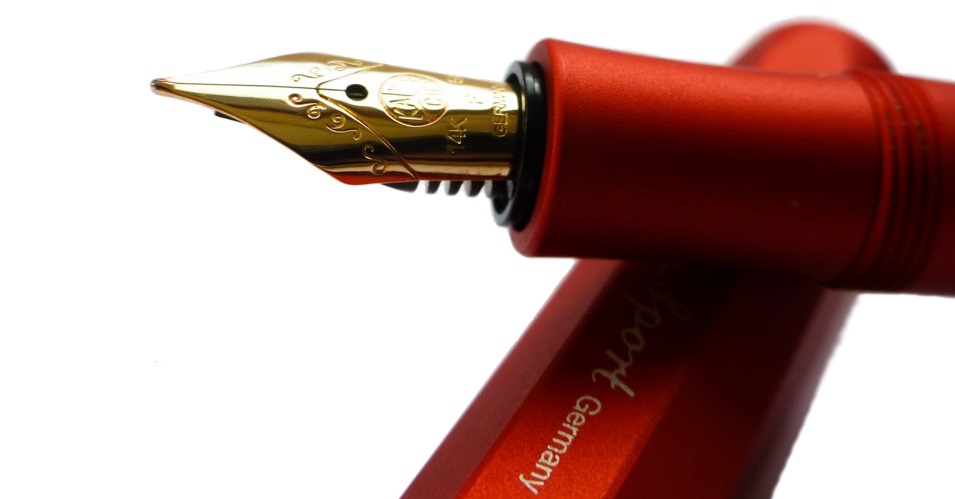 VFM Middling, honestly. At around £60 this is not a cheap pen, and it will probably cost you more than that on top to get the gold nib. Having said that, this is not a crazily overpriced pen either.
VFM Middling, honestly. At around £60 this is not a cheap pen, and it will probably cost you more than that on top to get the gold nib. Having said that, this is not a crazily overpriced pen either. If this isn’t quite your cup of tea, but almost… One of the hundred or so other Sport finishes might well be. Have a browse…
If this isn’t quite your cup of tea, but almost… One of the hundred or so other Sport finishes might well be. Have a browse… Our overall recommendation If you’re taken with this finish, get one while you can; although we think it’s excellent, it was a special edition so it may not be available forever.
Our overall recommendation If you’re taken with this finish, get one while you can; although we think it’s excellent, it was a special edition so it may not be available forever.
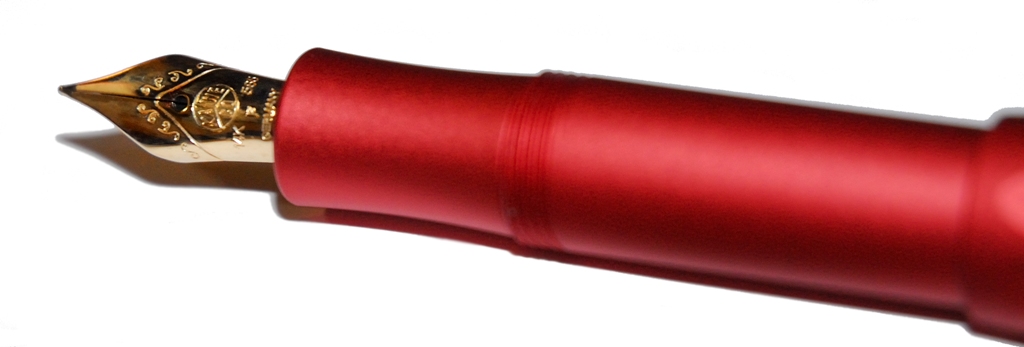
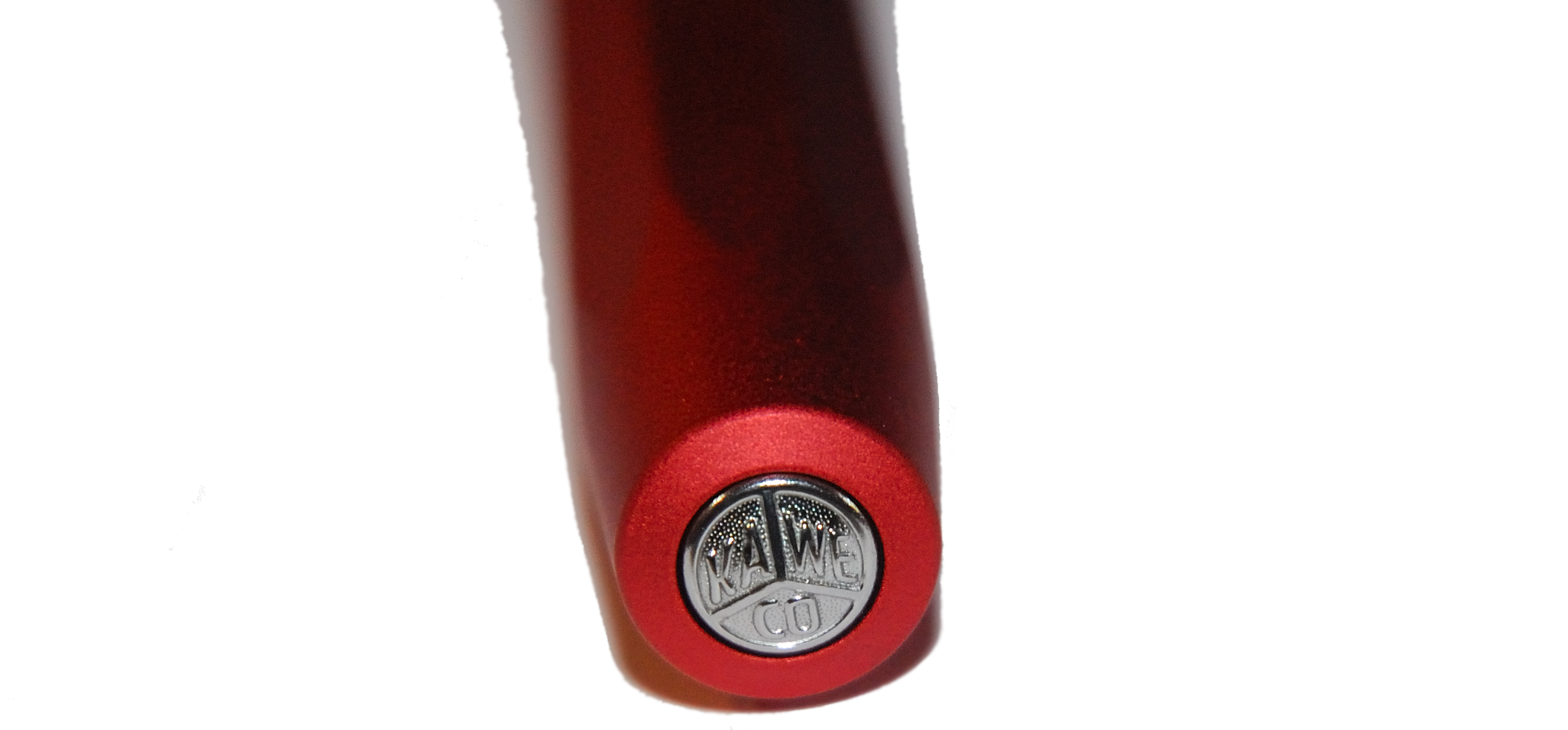 Thanks to Kaweco for the rather tempting review sample pack; our calligrapher couldn’t bear to let it go!
Thanks to Kaweco for the rather tempting review sample pack; our calligrapher couldn’t bear to let it go!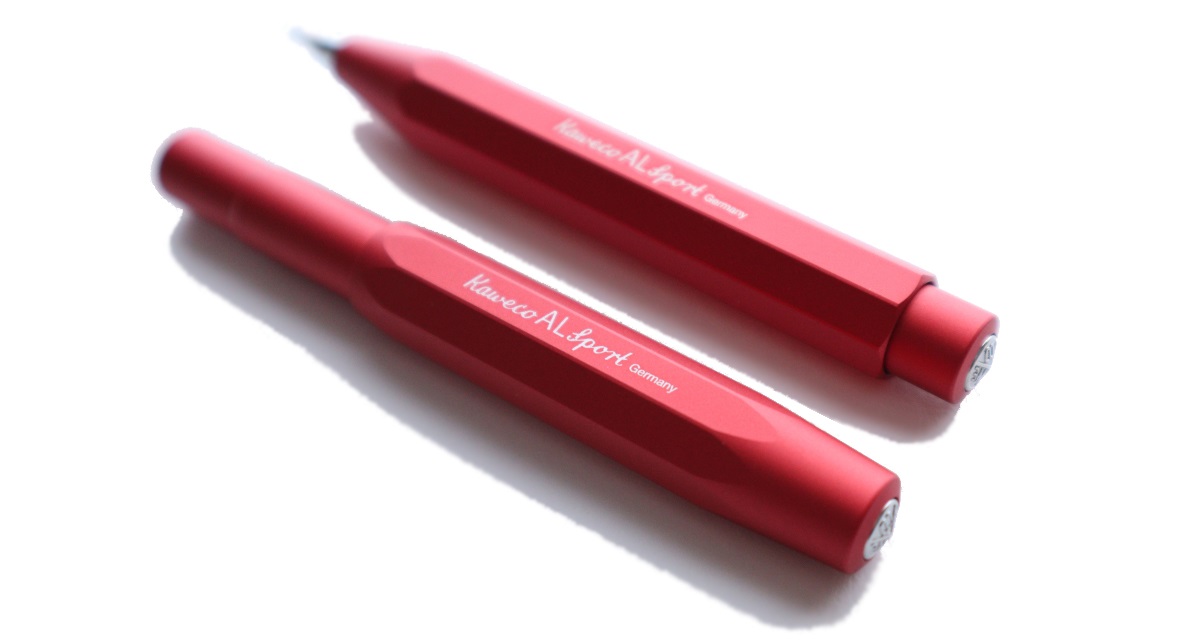
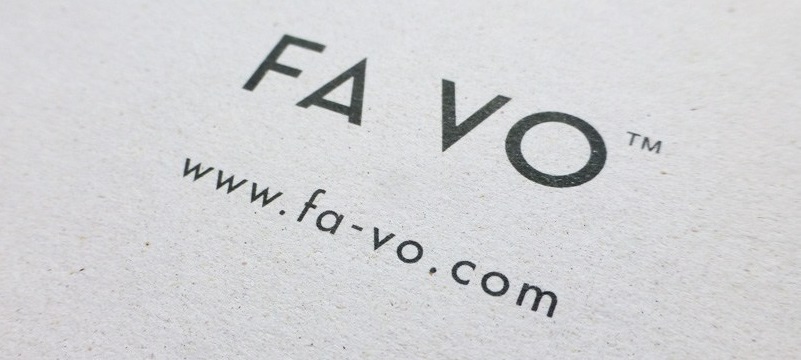
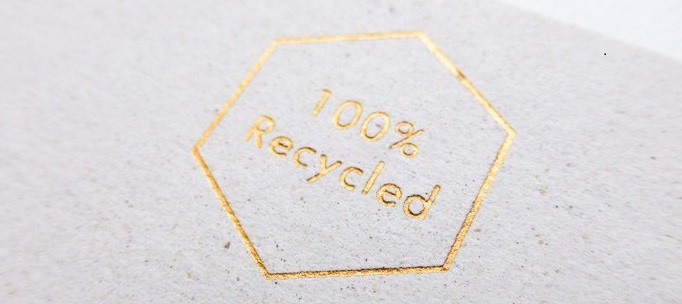
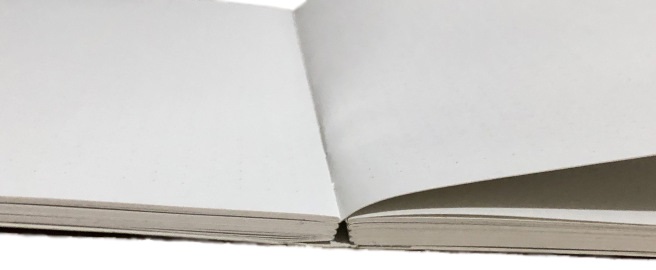 Crucially, how it handles a fountain pen… As previously mentioned, the notebook uses recycled paper – so what you’re getting isn’t going to be akin to the great writing experience of, say, Clairefontaine. However, it was pleasantly surprising, because for recycled paper this did quite well. We noticed some bleed and minor show-through, but we could also see some shading and a slight amount of sheen on certain tests. So it’s reassuring that the writing won’t look ‘flat’ and without dimension on the page.
Crucially, how it handles a fountain pen… As previously mentioned, the notebook uses recycled paper – so what you’re getting isn’t going to be akin to the great writing experience of, say, Clairefontaine. However, it was pleasantly surprising, because for recycled paper this did quite well. We noticed some bleed and minor show-through, but we could also see some shading and a slight amount of sheen on certain tests. So it’s reassuring that the writing won’t look ‘flat’ and without dimension on the page.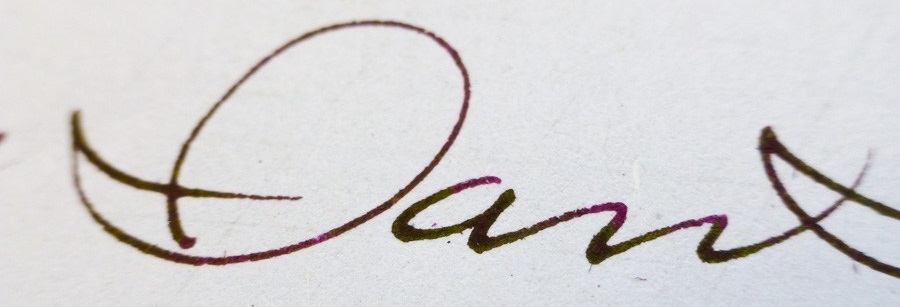
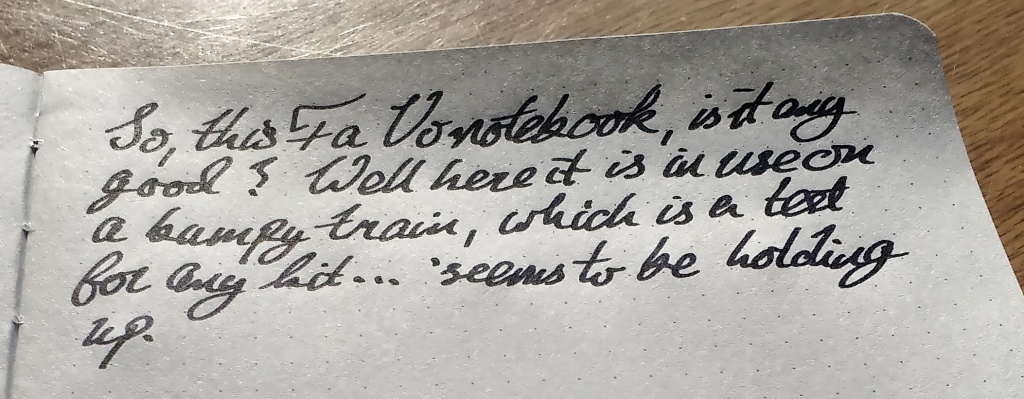
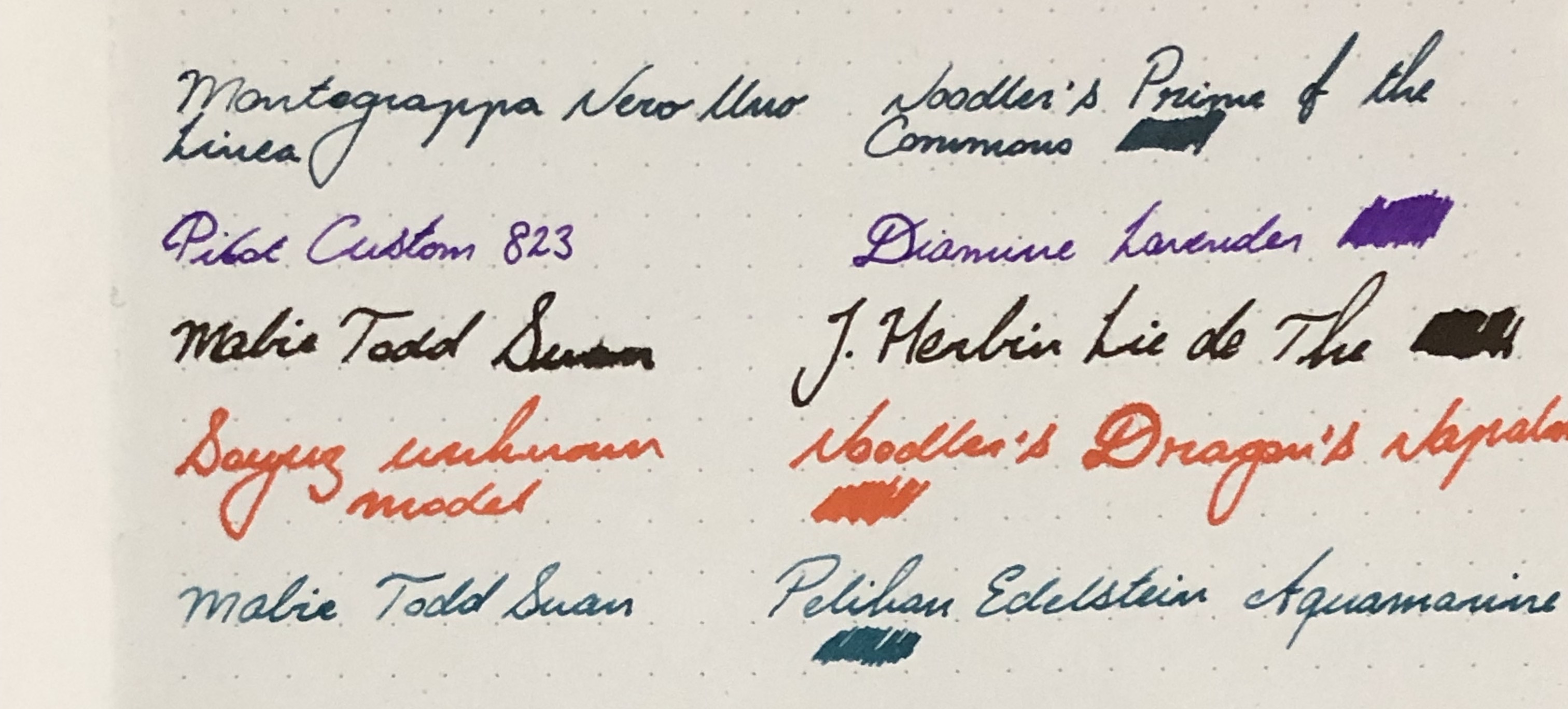
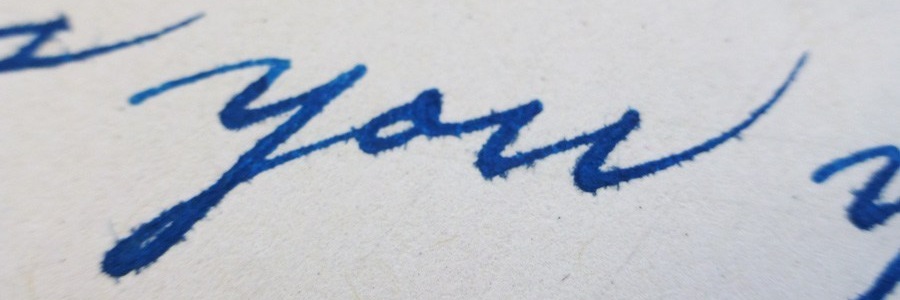
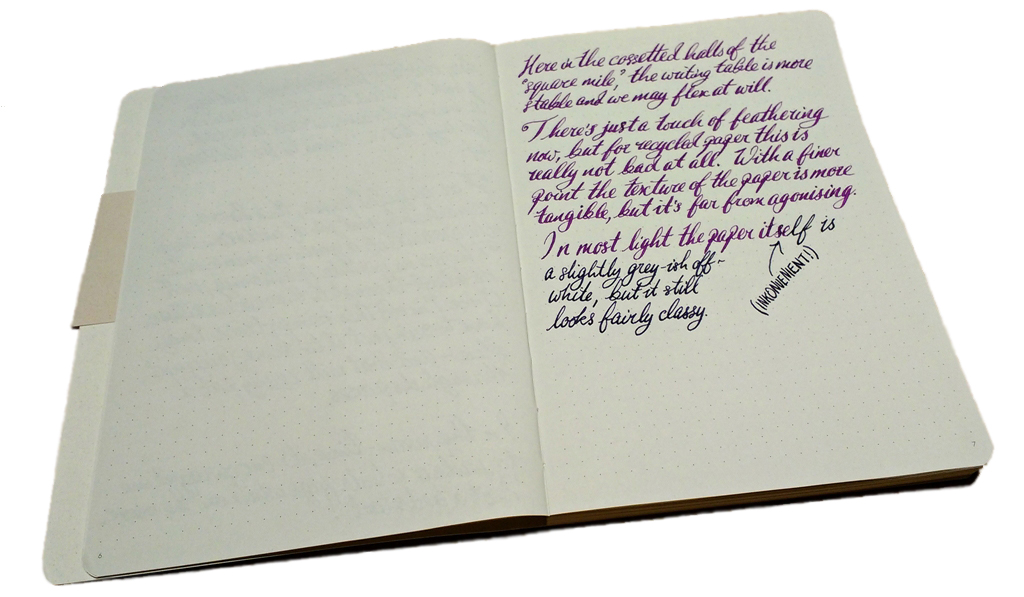
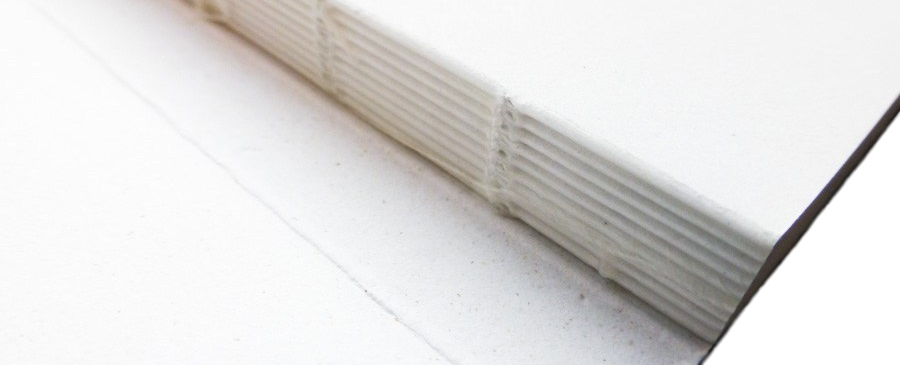
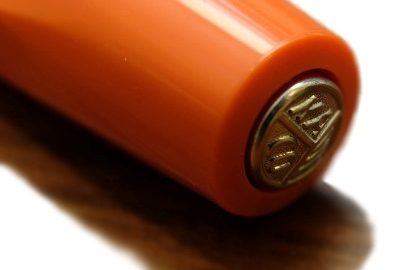
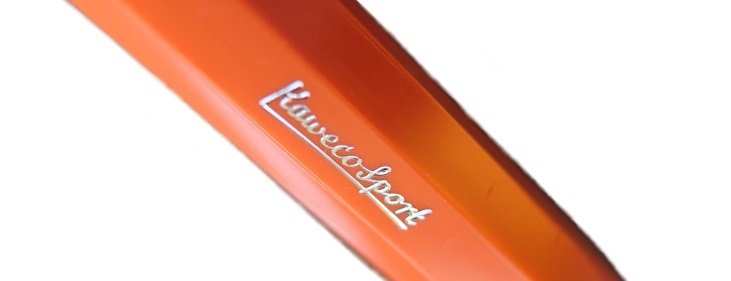 How it looks The shape is, of course, the same as for all Sports. The colour is a reliably foxy dark orange (don’t show it a beagle), with a few silvery highlights. It’s a classy presentation.
How it looks The shape is, of course, the same as for all Sports. The colour is a reliably foxy dark orange (don’t show it a beagle), with a few silvery highlights. It’s a classy presentation.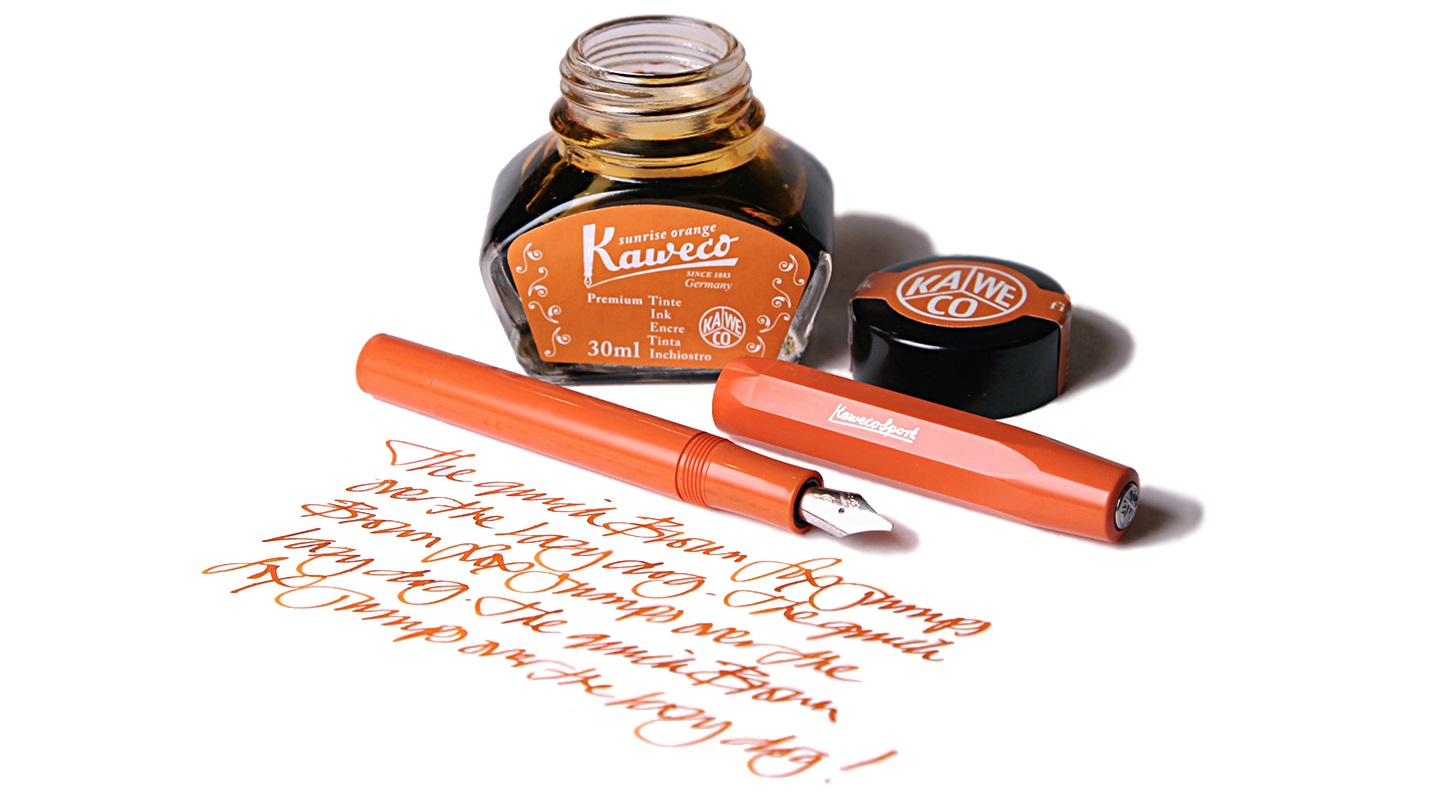
 How it fills The Sport has a legion of fans who also own a syringe, and refilling a cartridge is probably the best way to get a decent supply of ink. There is also a tiny push-rod converter, and it actually does work, but the ink capacity is very modest.
How it fills The Sport has a legion of fans who also own a syringe, and refilling a cartridge is probably the best way to get a decent supply of ink. There is also a tiny push-rod converter, and it actually does work, but the ink capacity is very modest.
 VFM At under £20, this is decent value – no complaints there.
VFM At under £20, this is decent value – no complaints there. If this isn’t quite your cup of tea, but almost… Pick a different Sport; there are dozens to choose from!
If this isn’t quite your cup of tea, but almost… Pick a different Sport; there are dozens to choose from!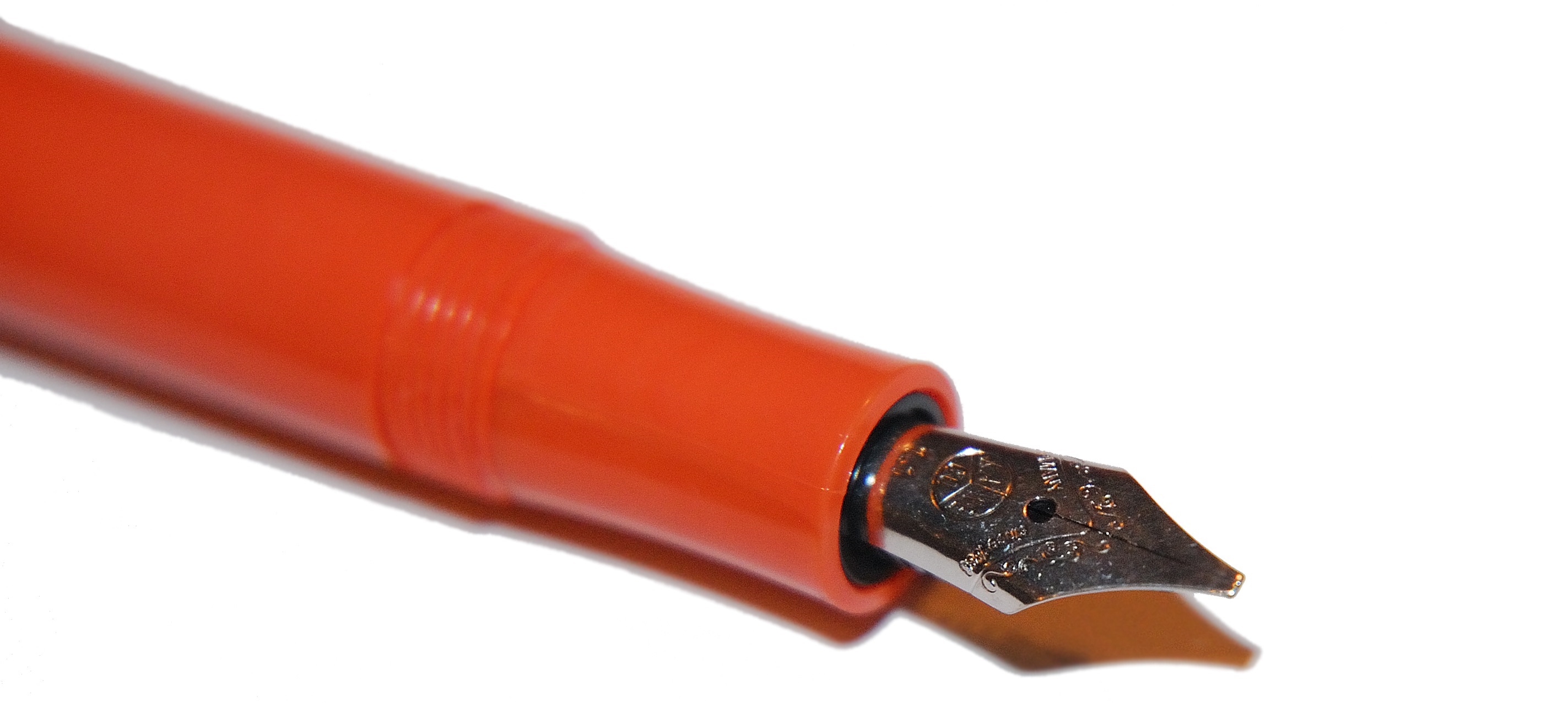 Our overall recommendation If you like the colour, and you’re already a happy owner of a Sport or two, get one before it bounds over the hedge.
Our overall recommendation If you like the colour, and you’re already a happy owner of a Sport or two, get one before it bounds over the hedge.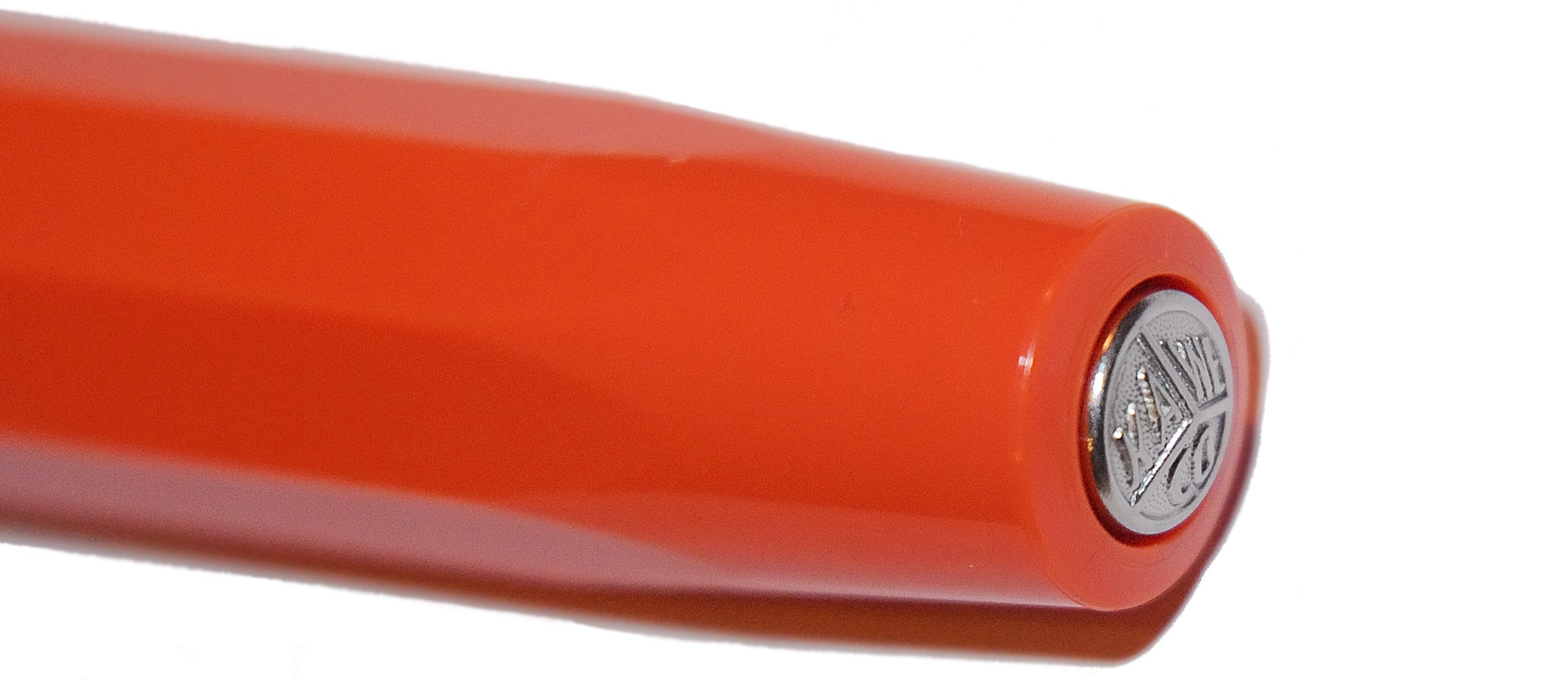 This meta-review references:
This meta-review references: